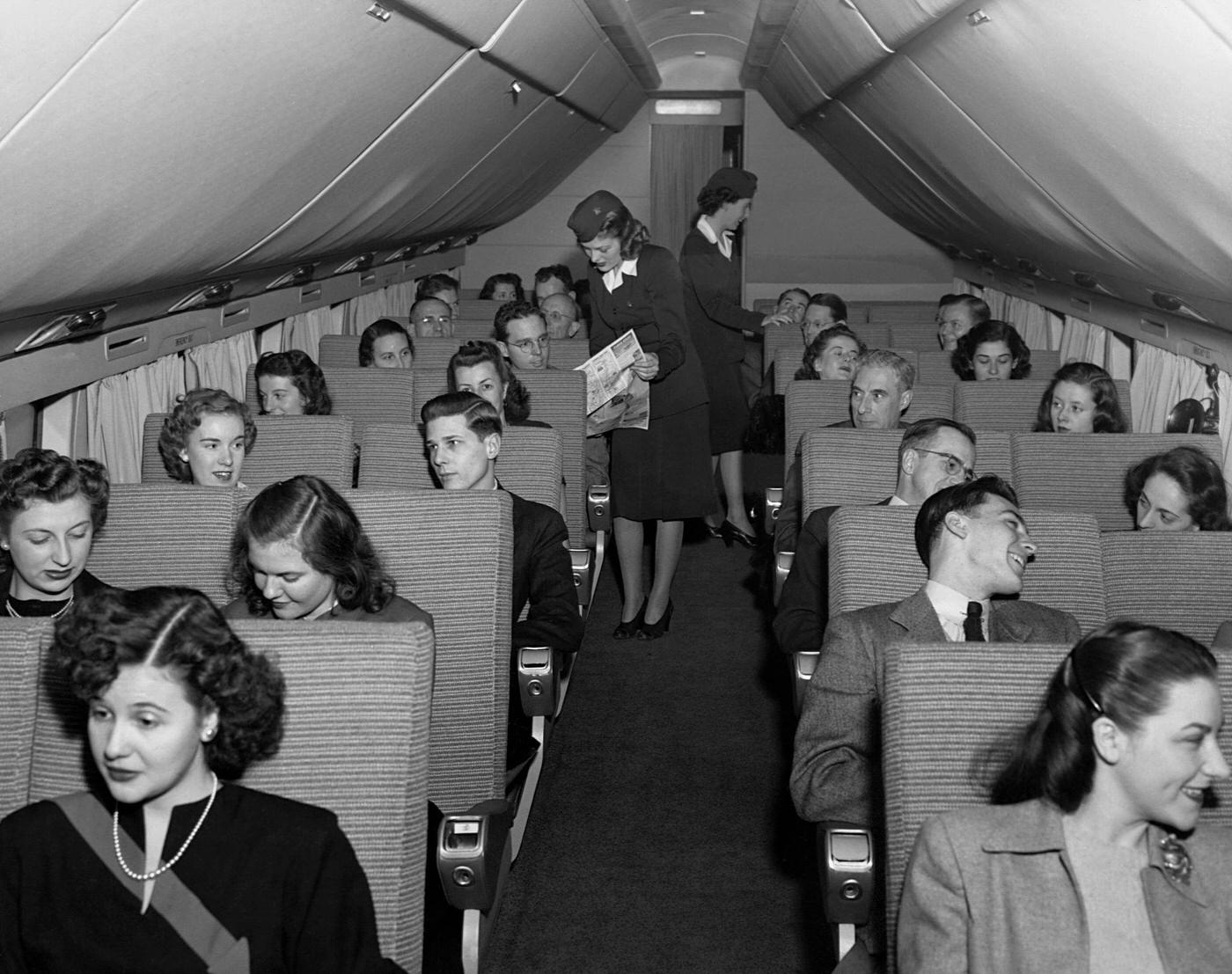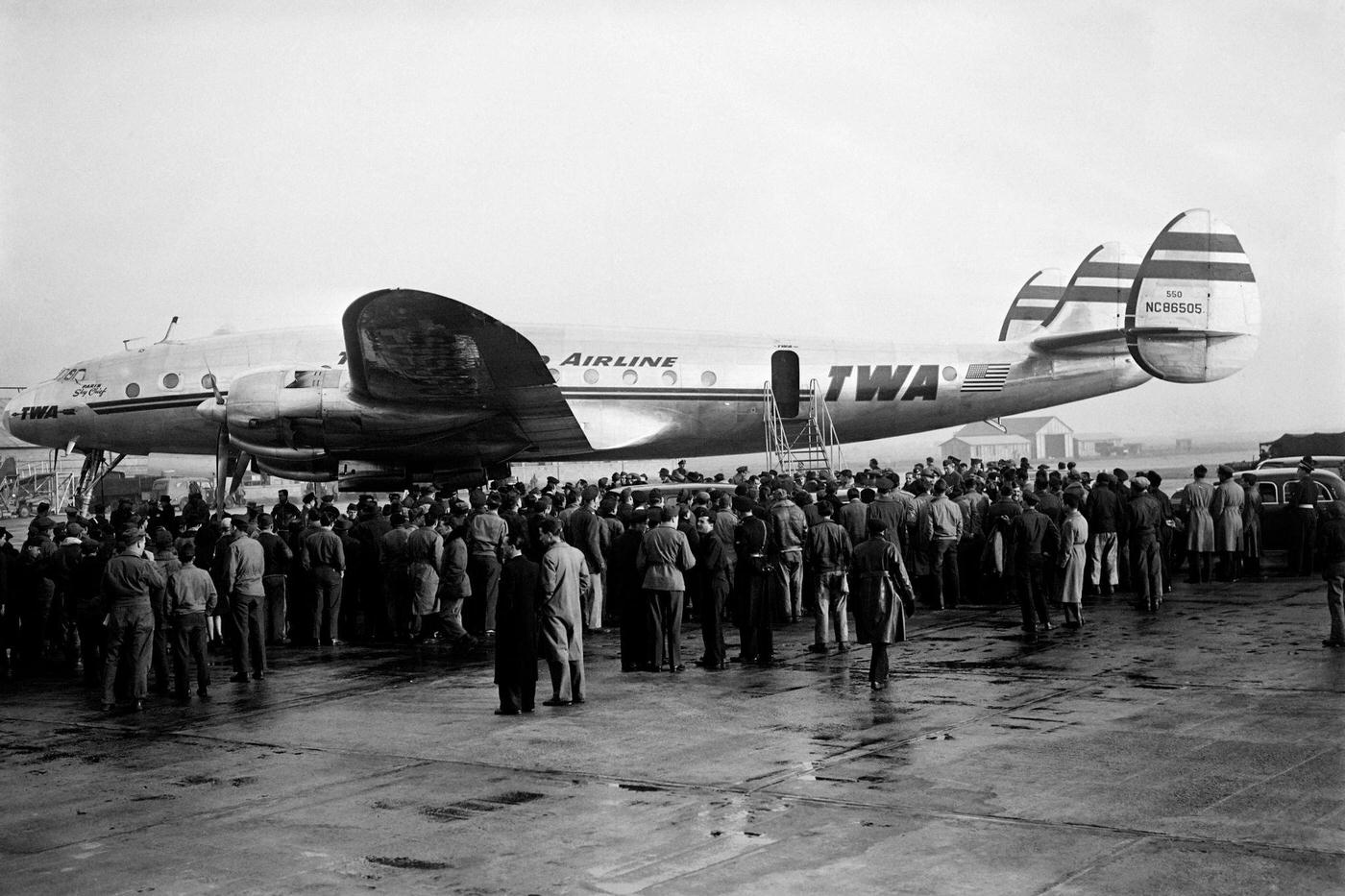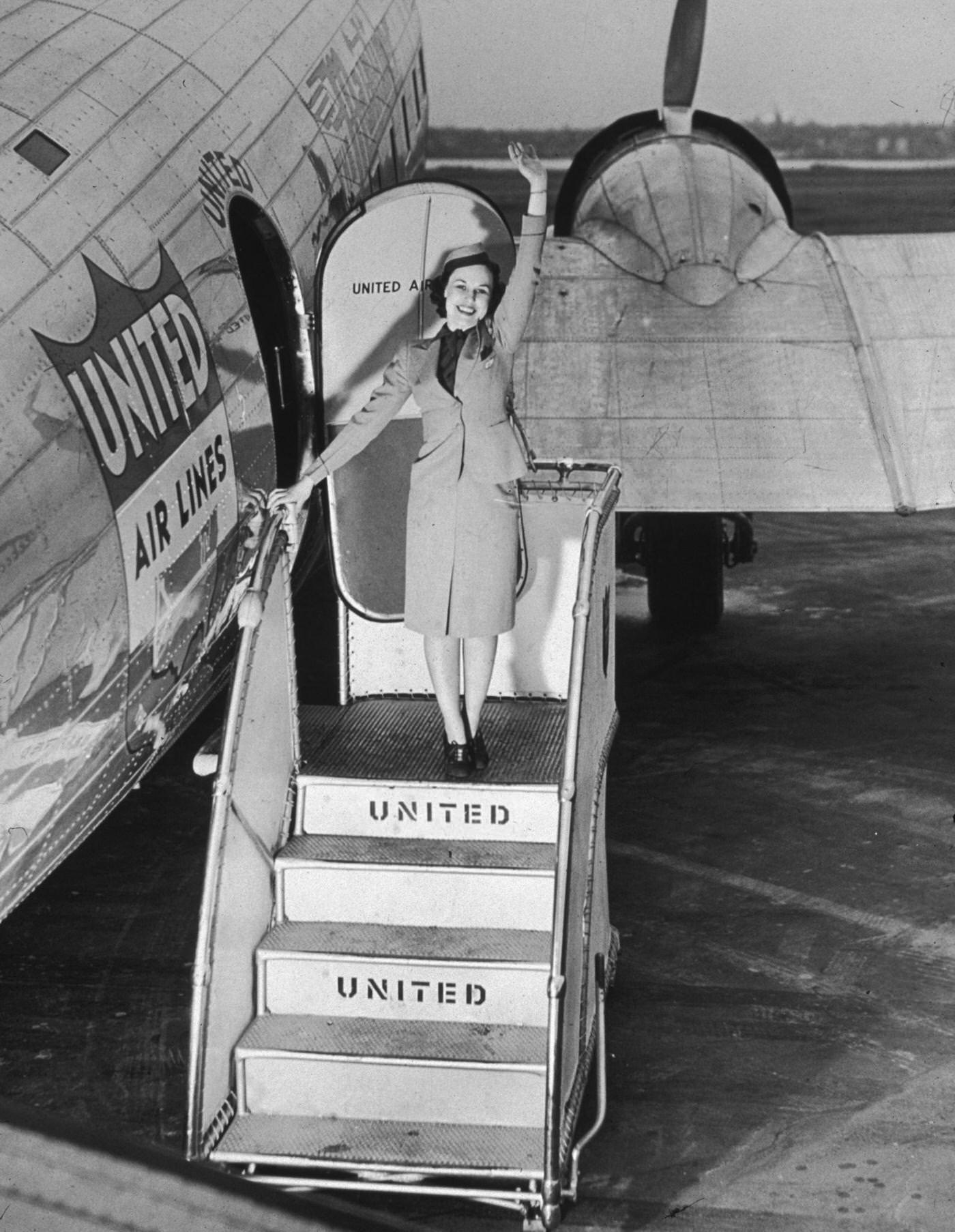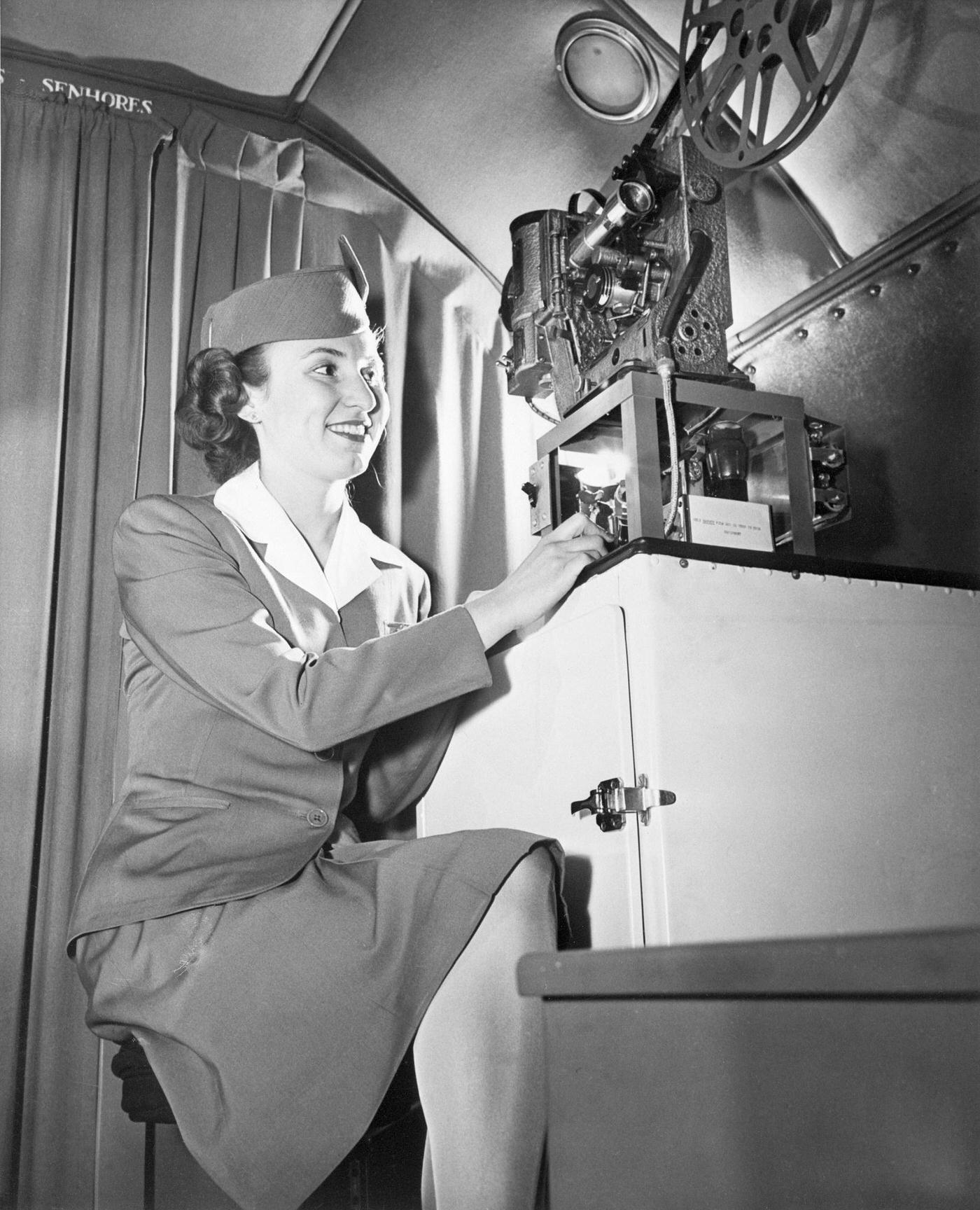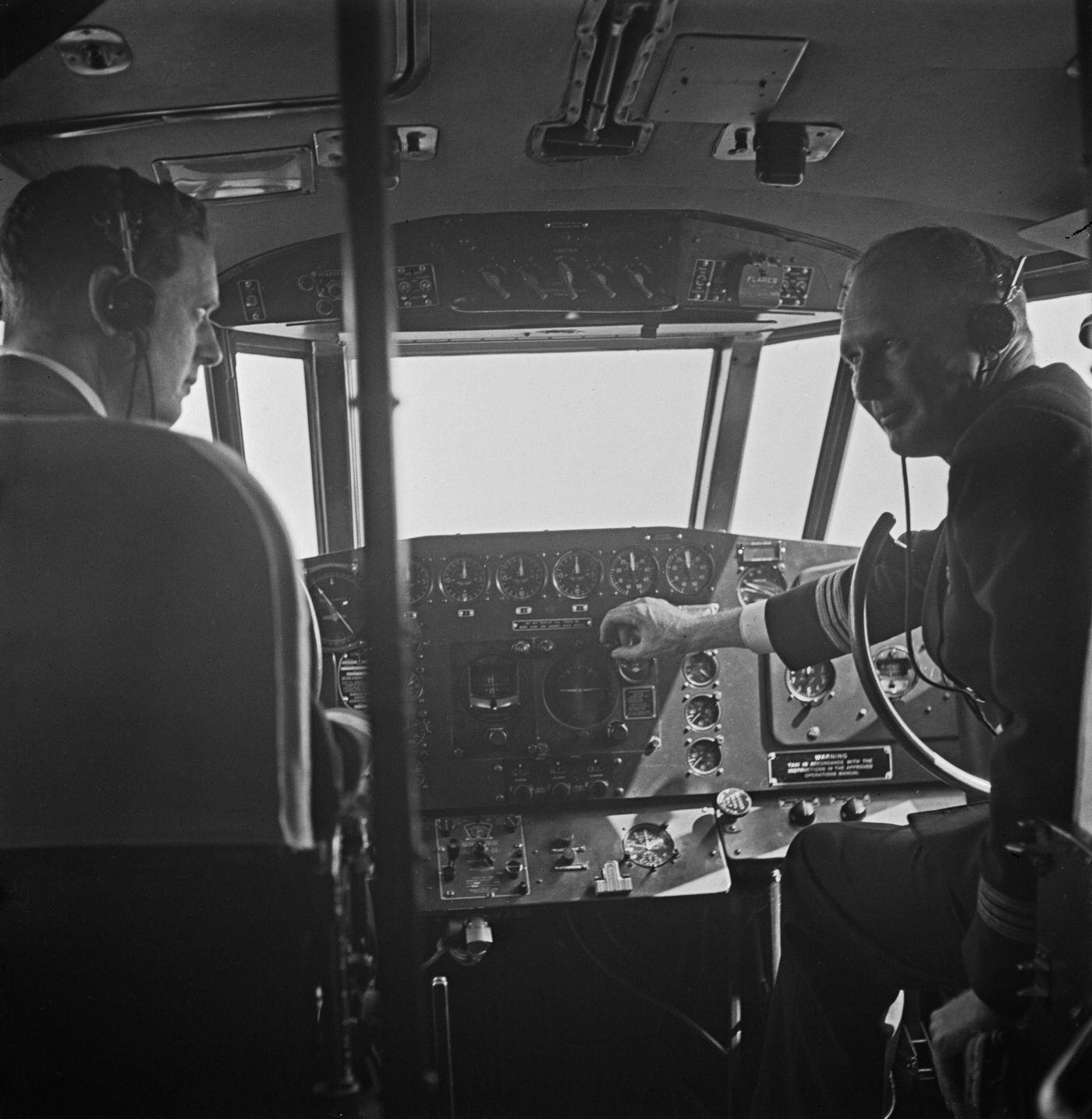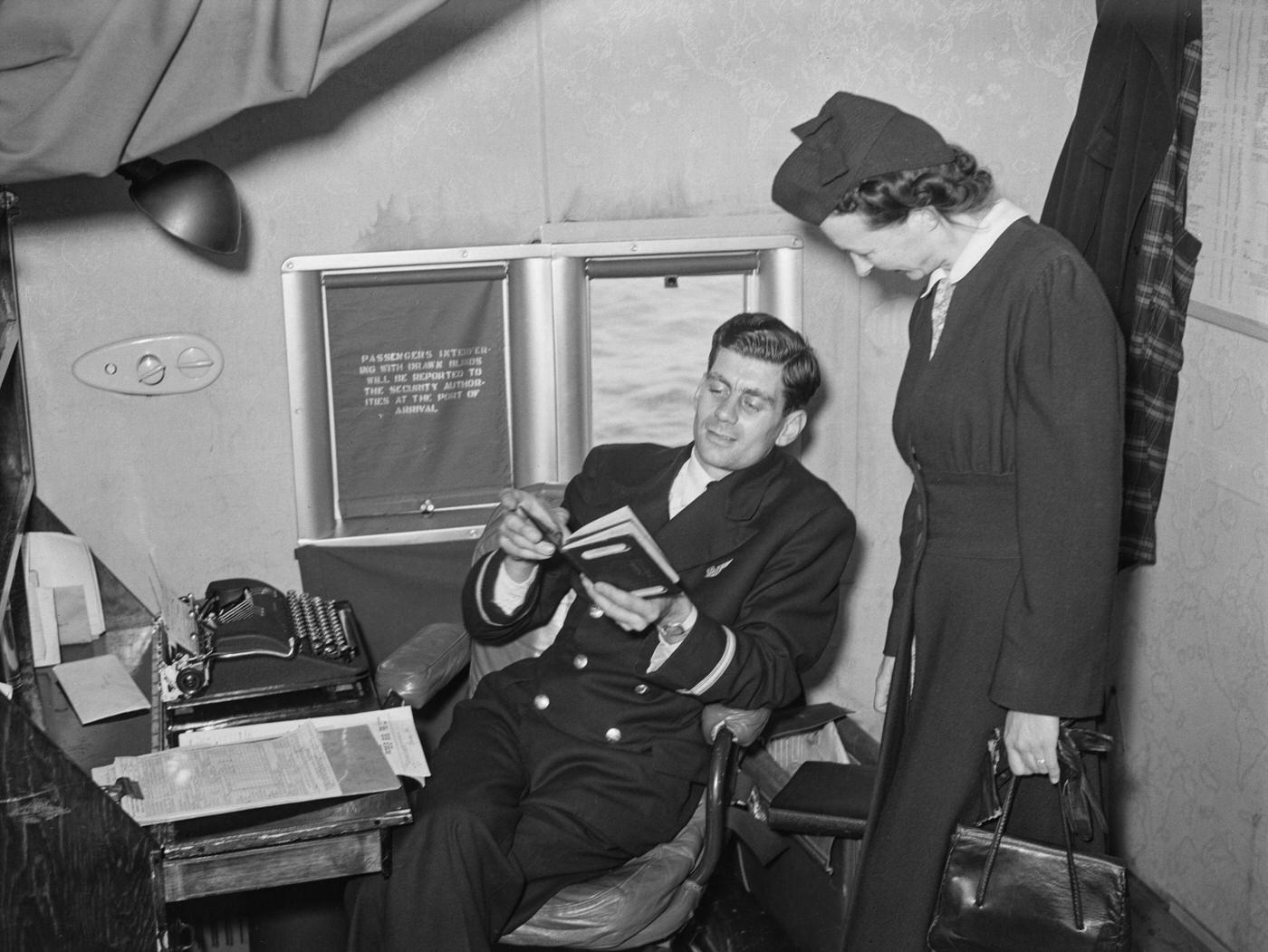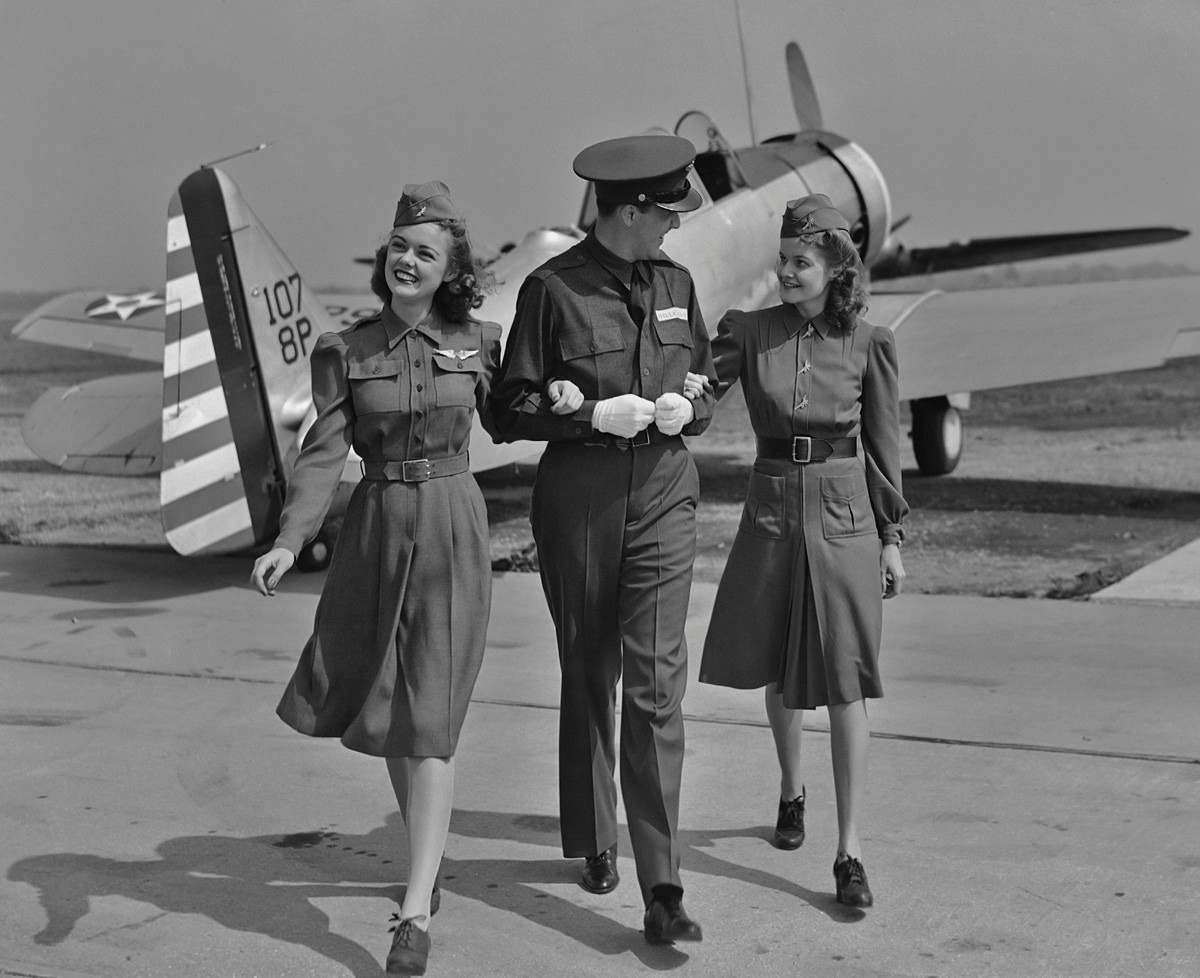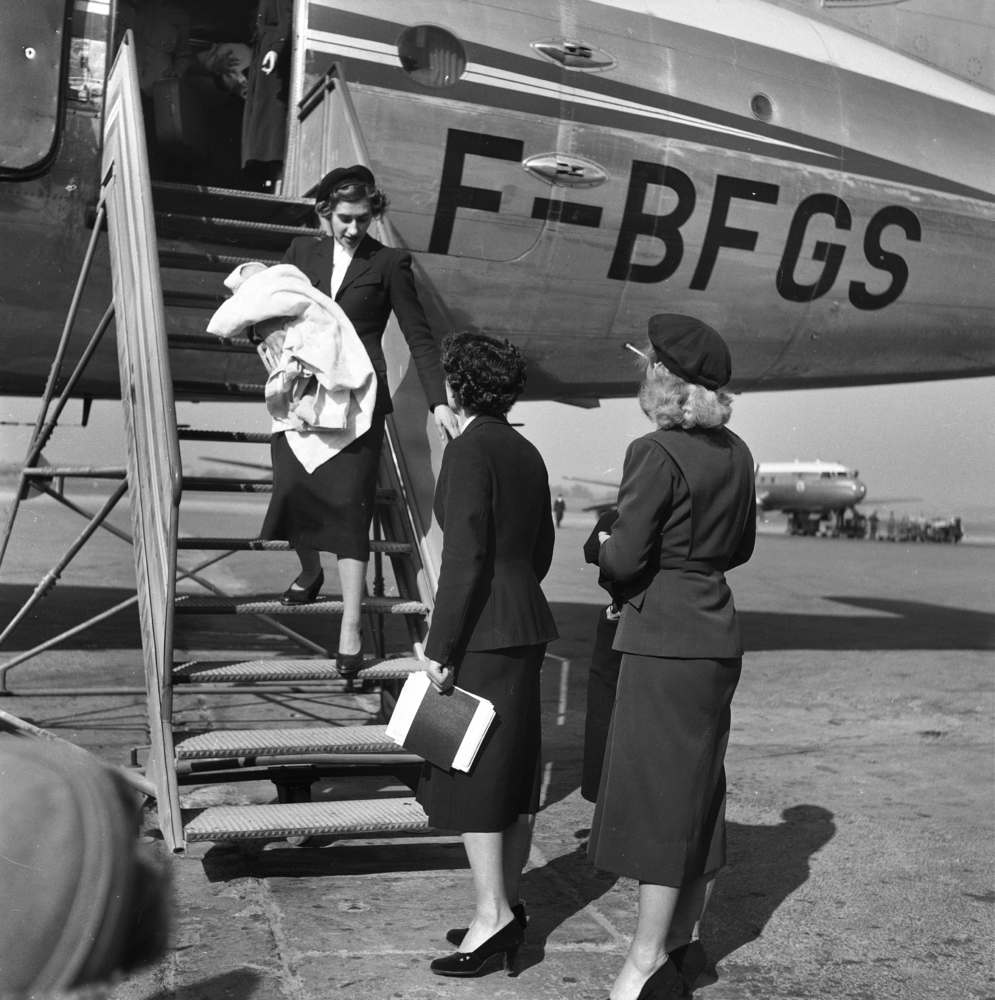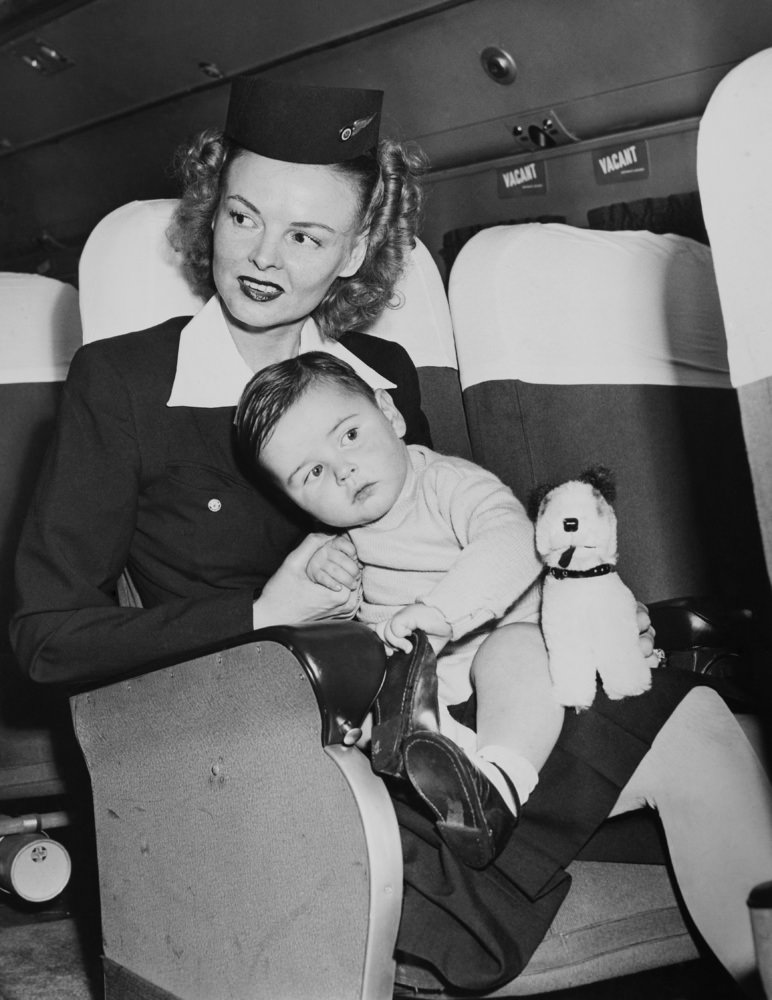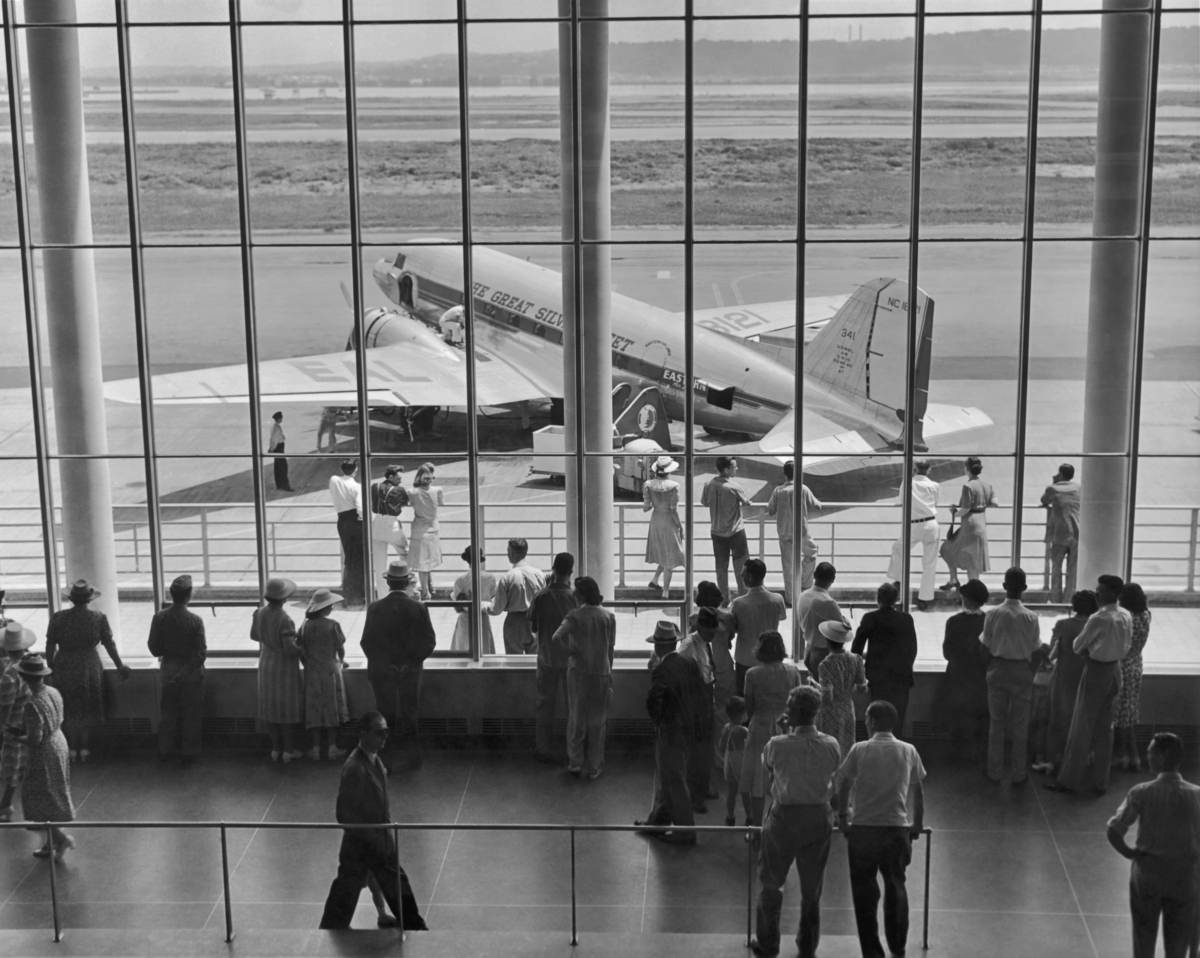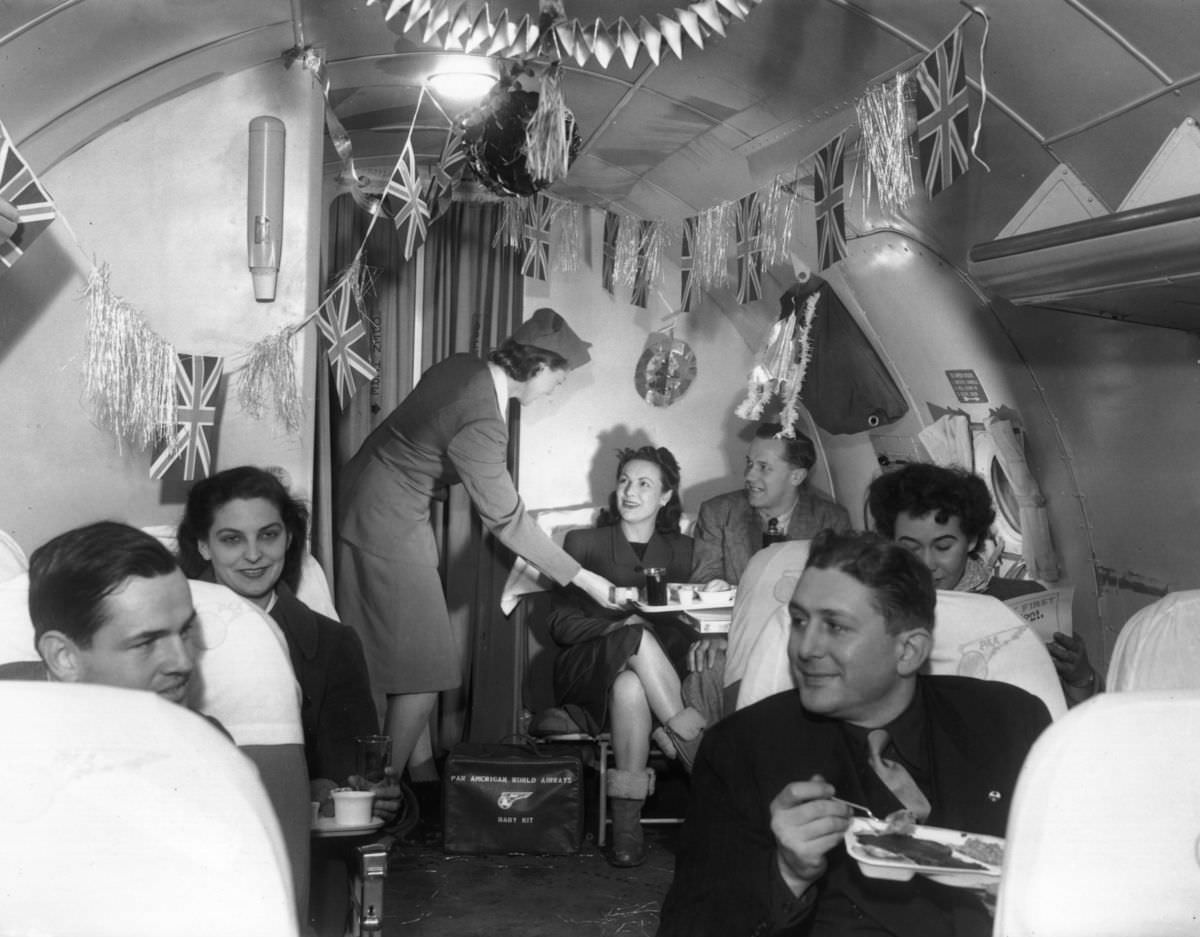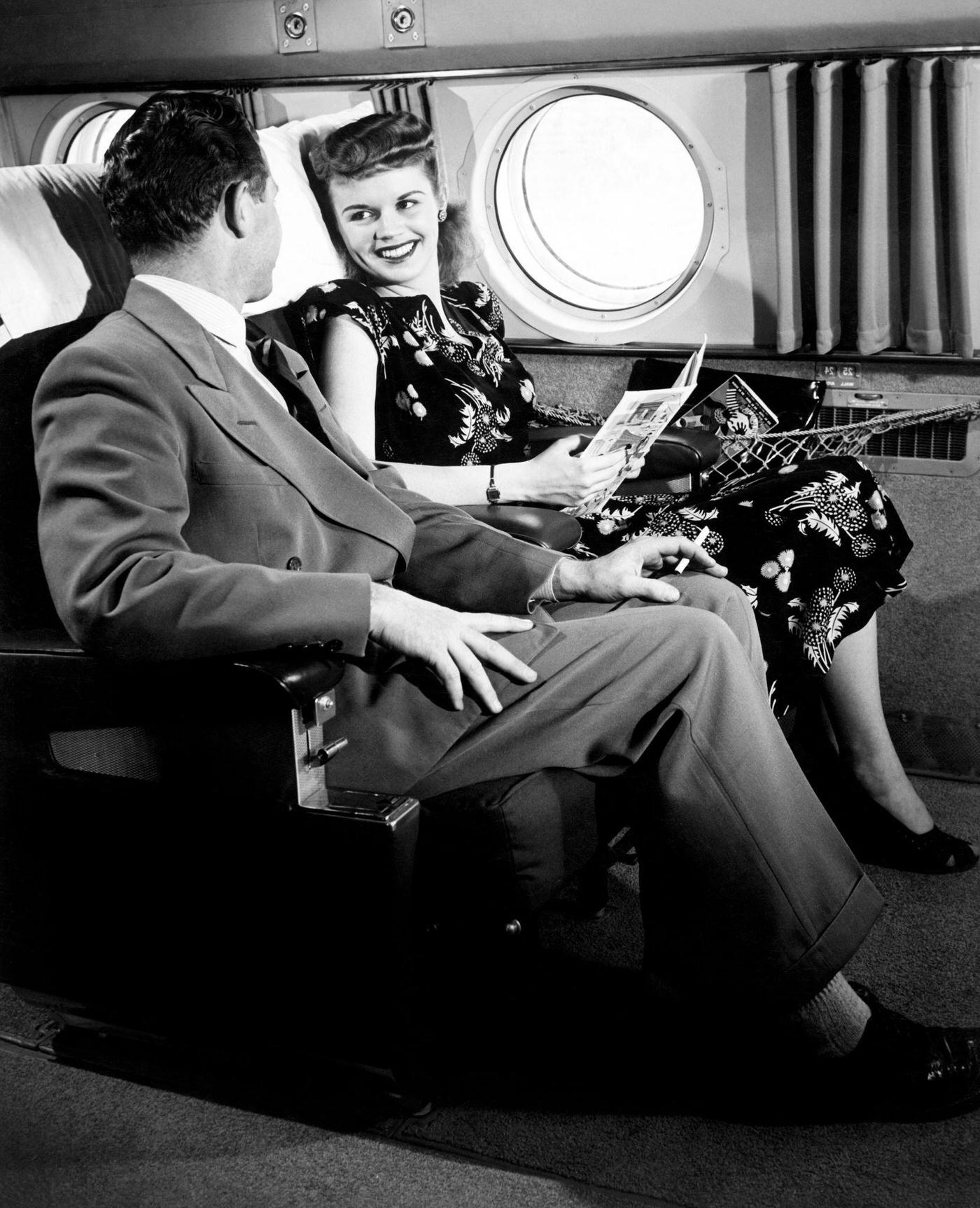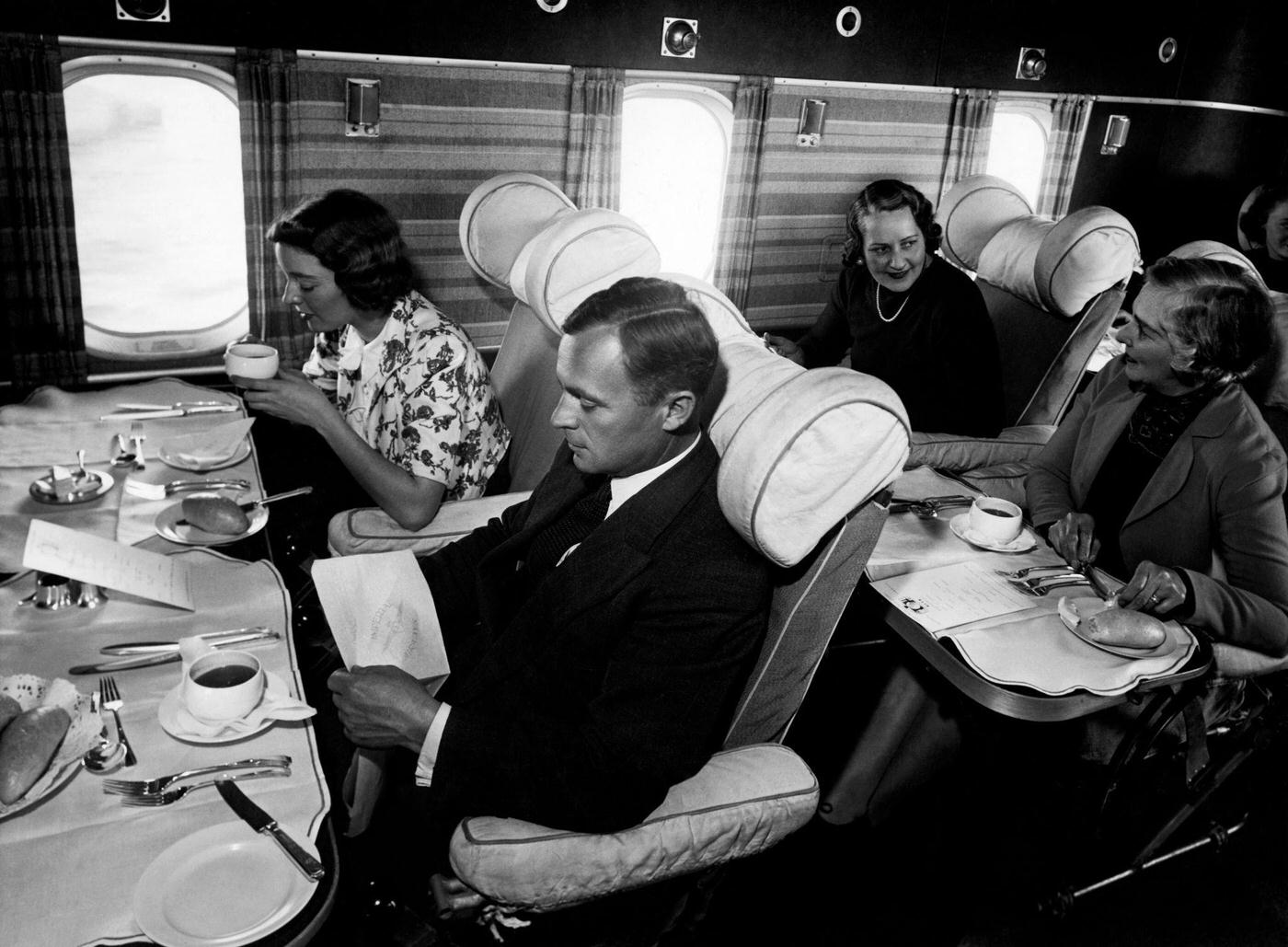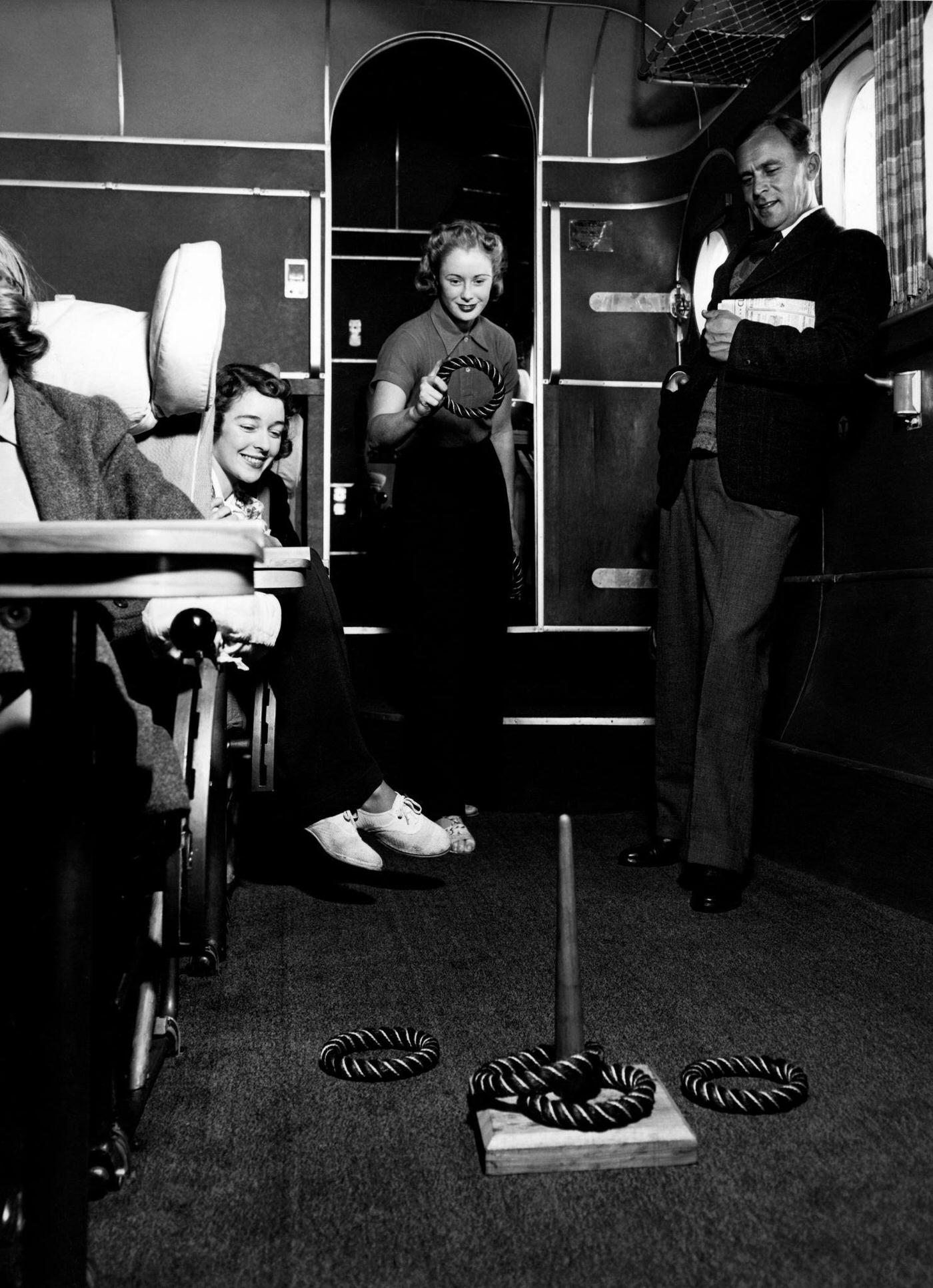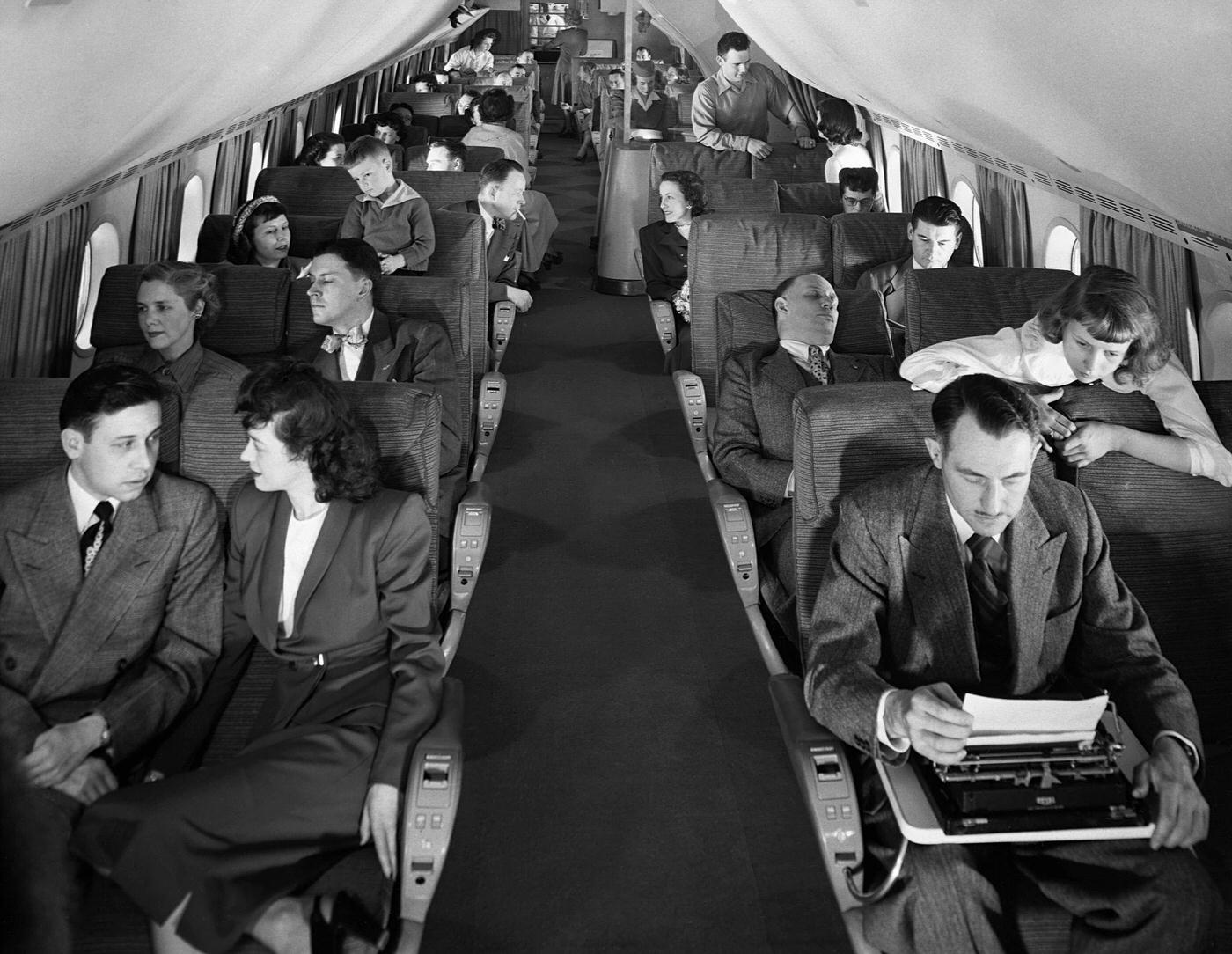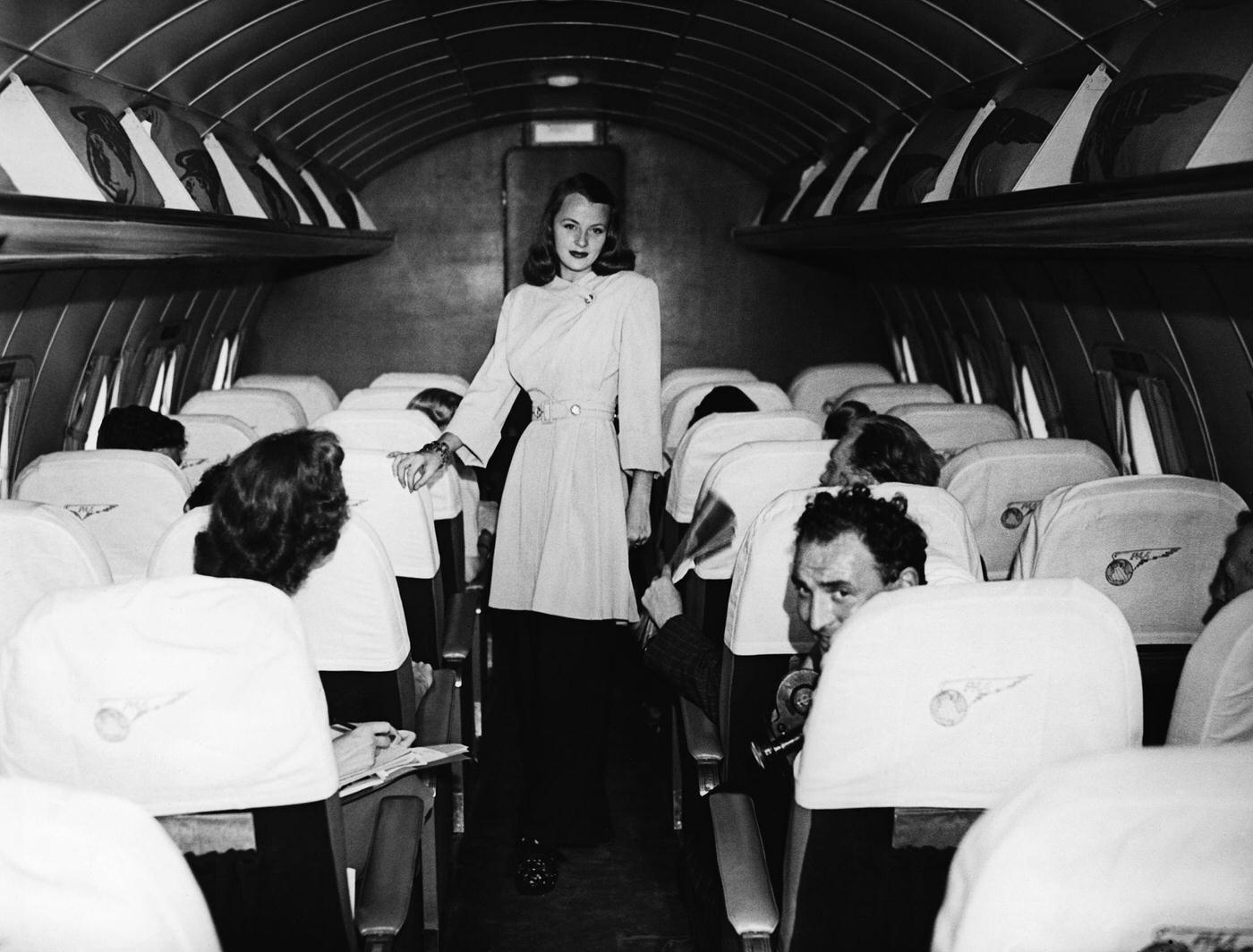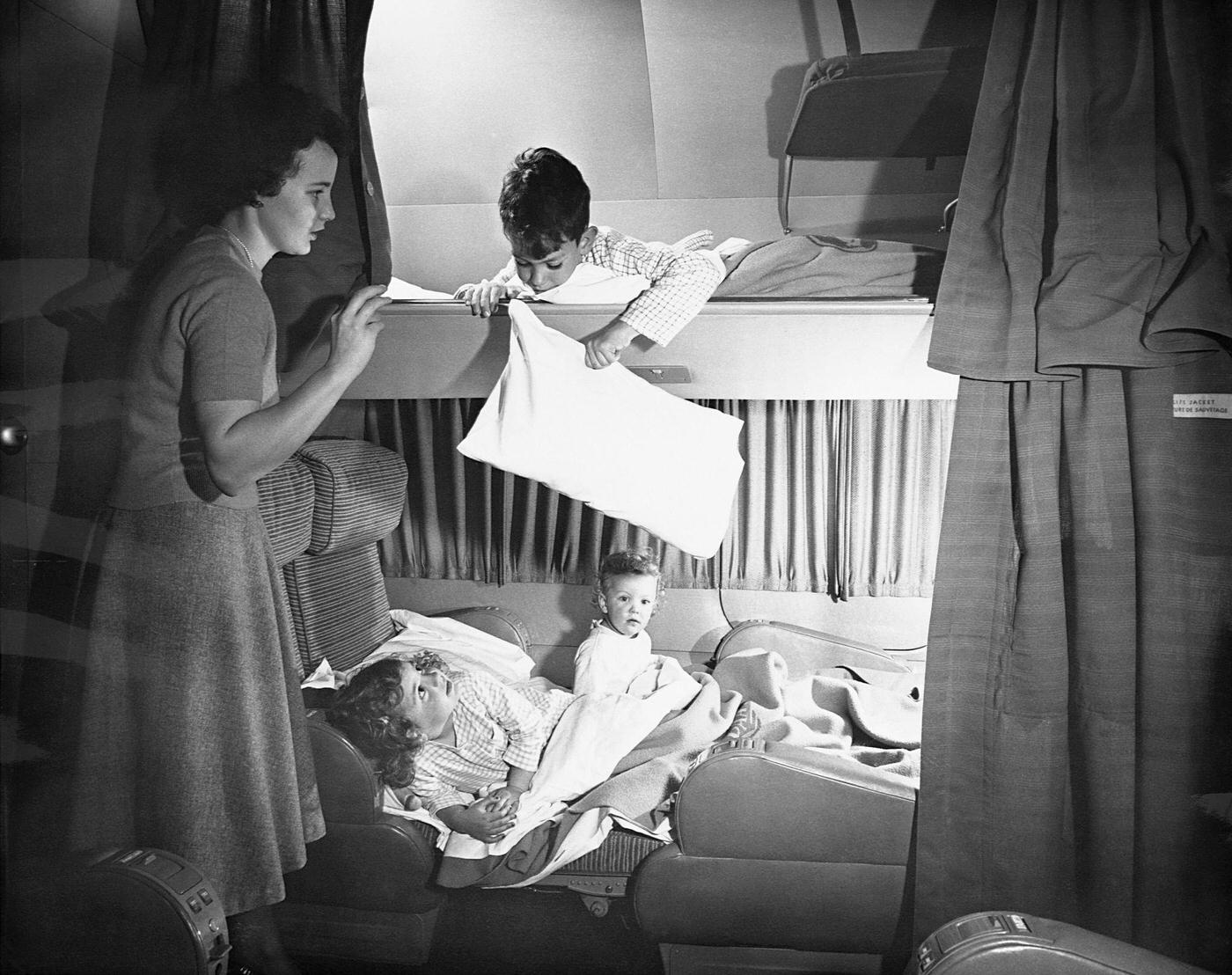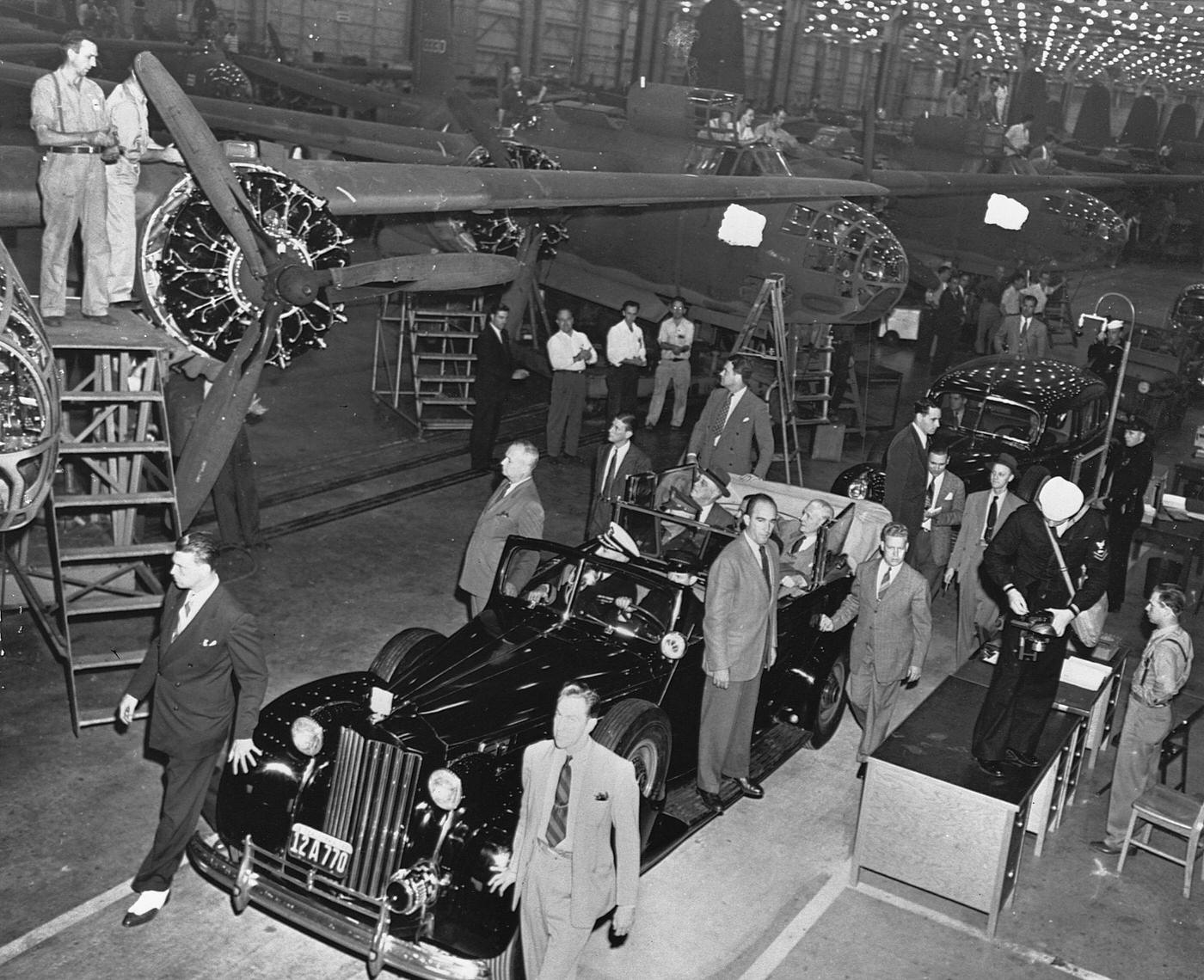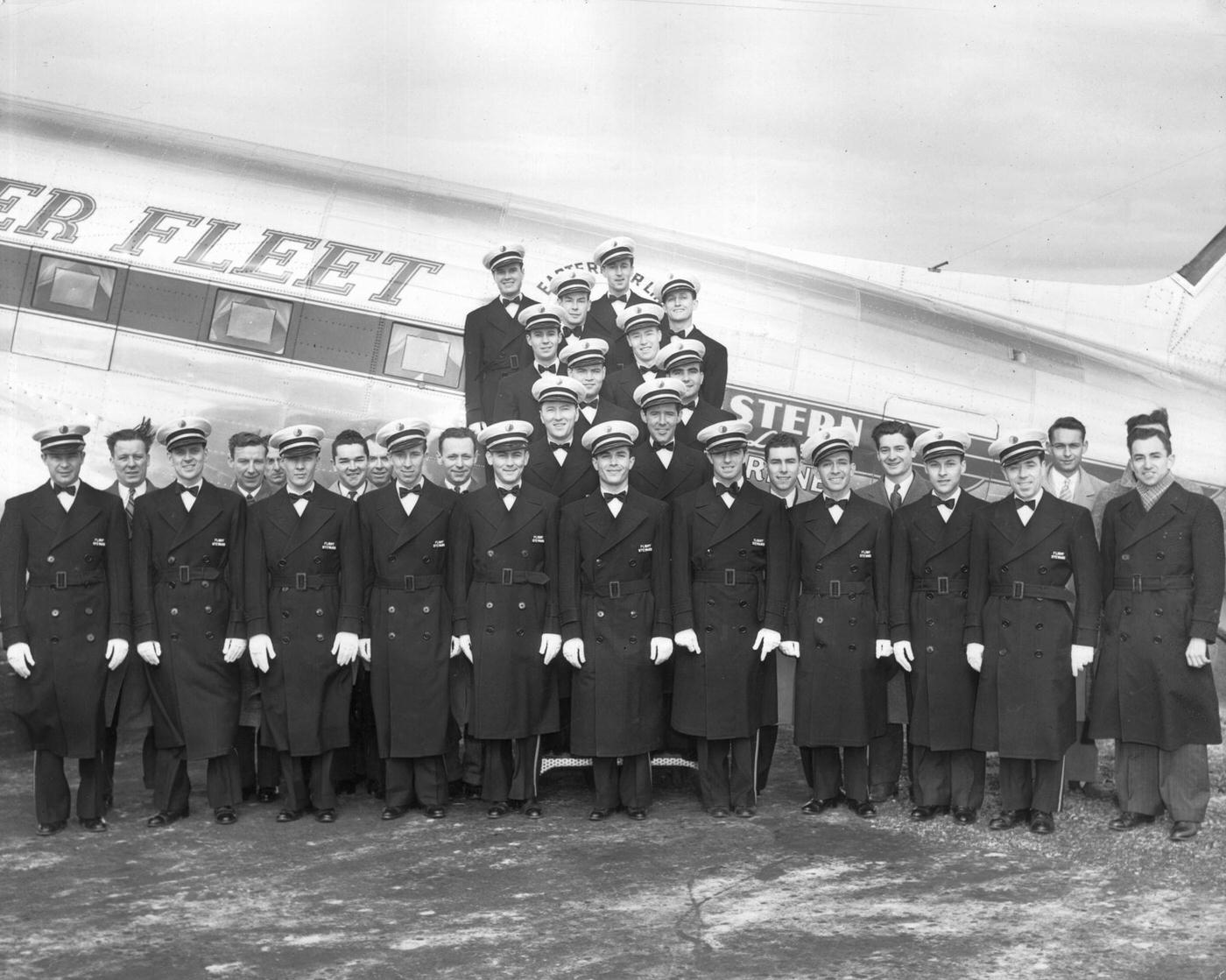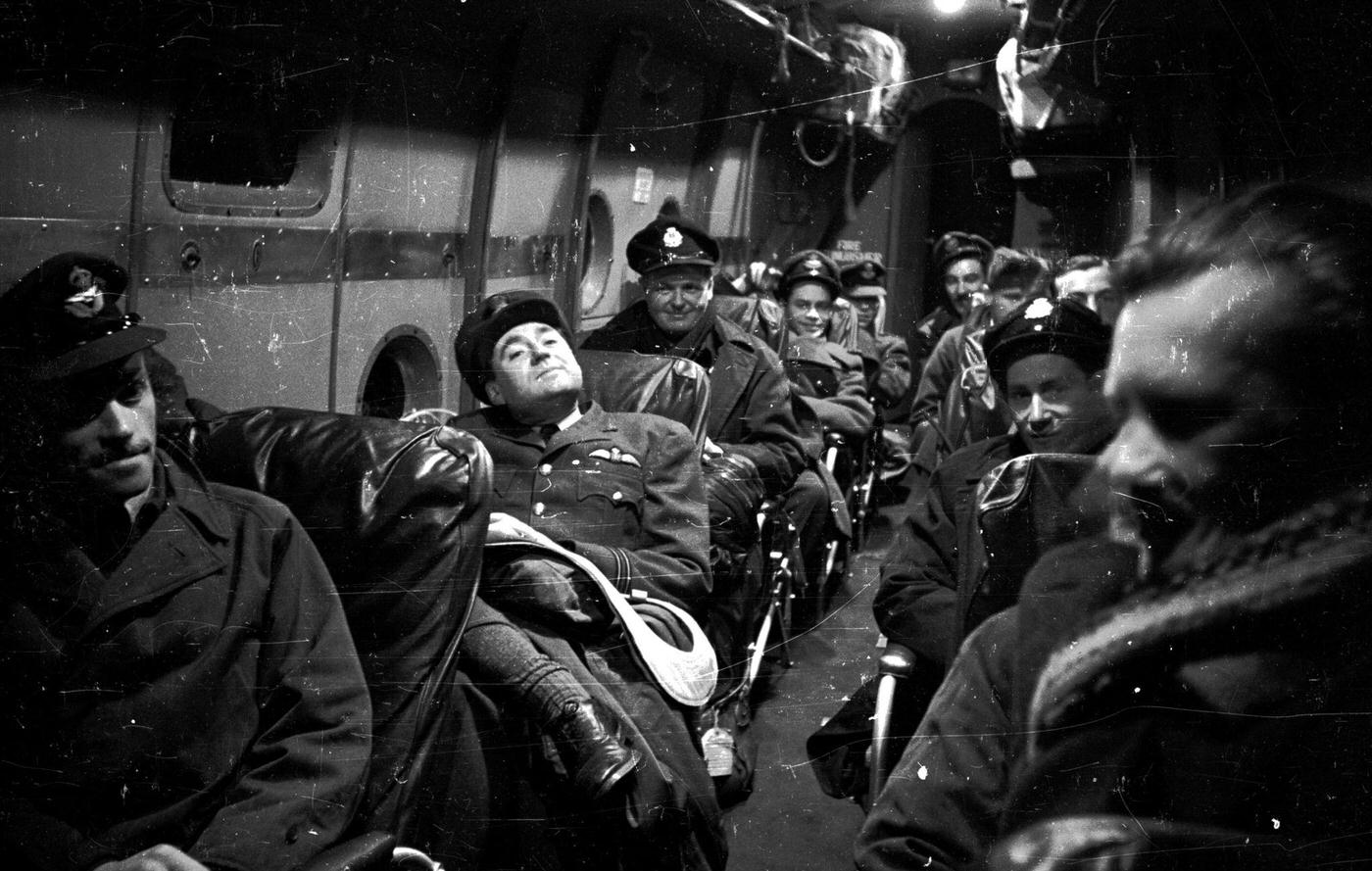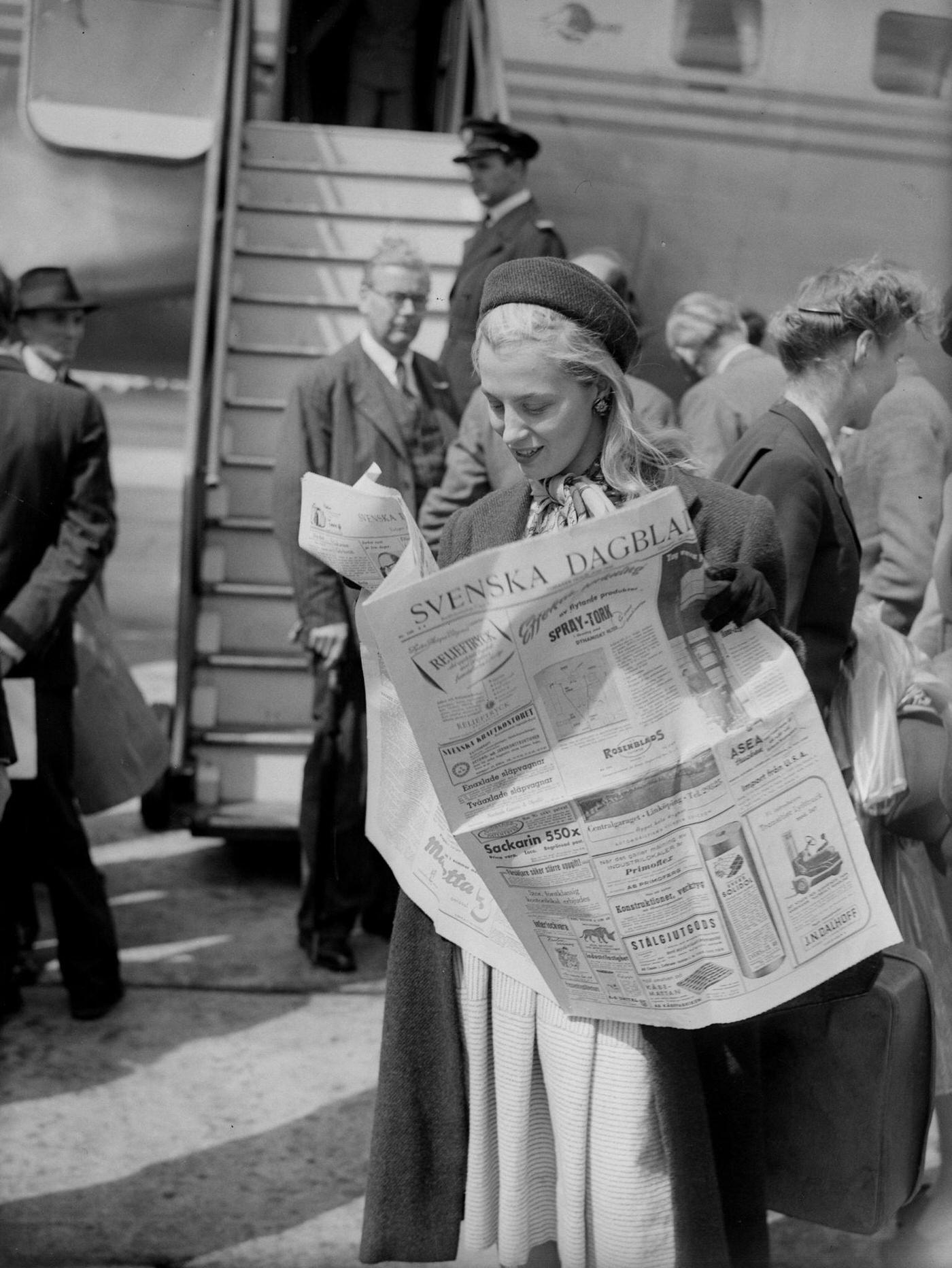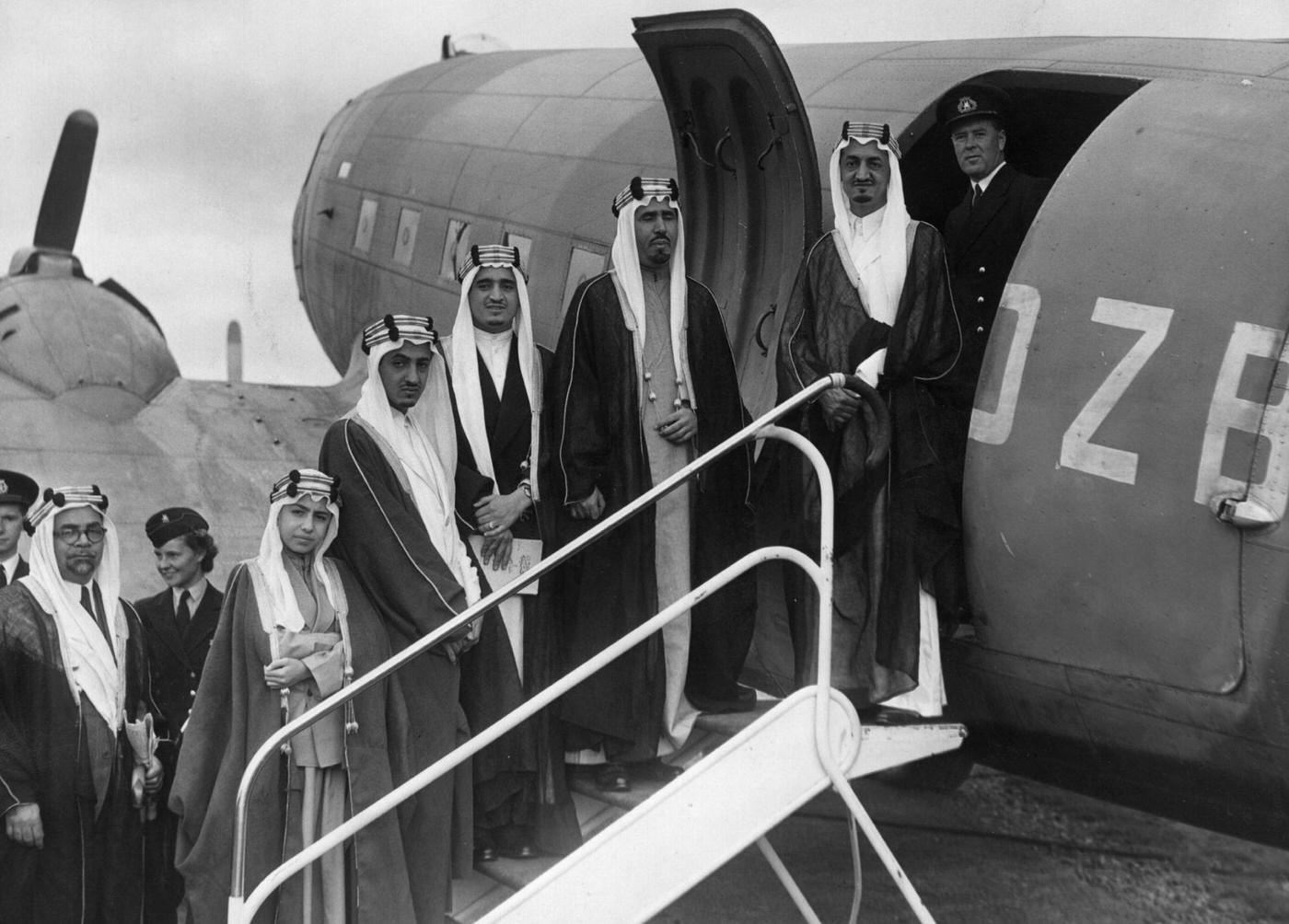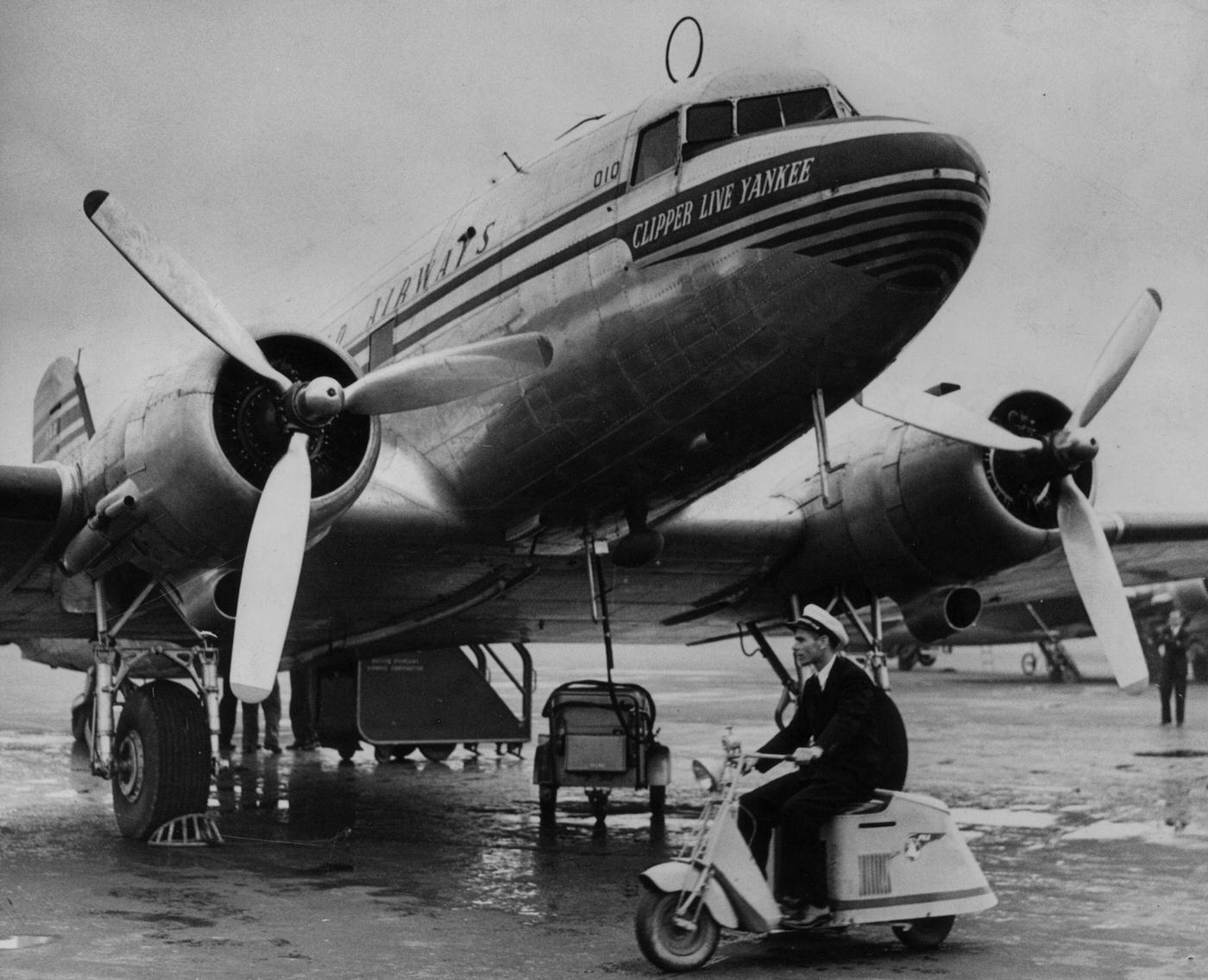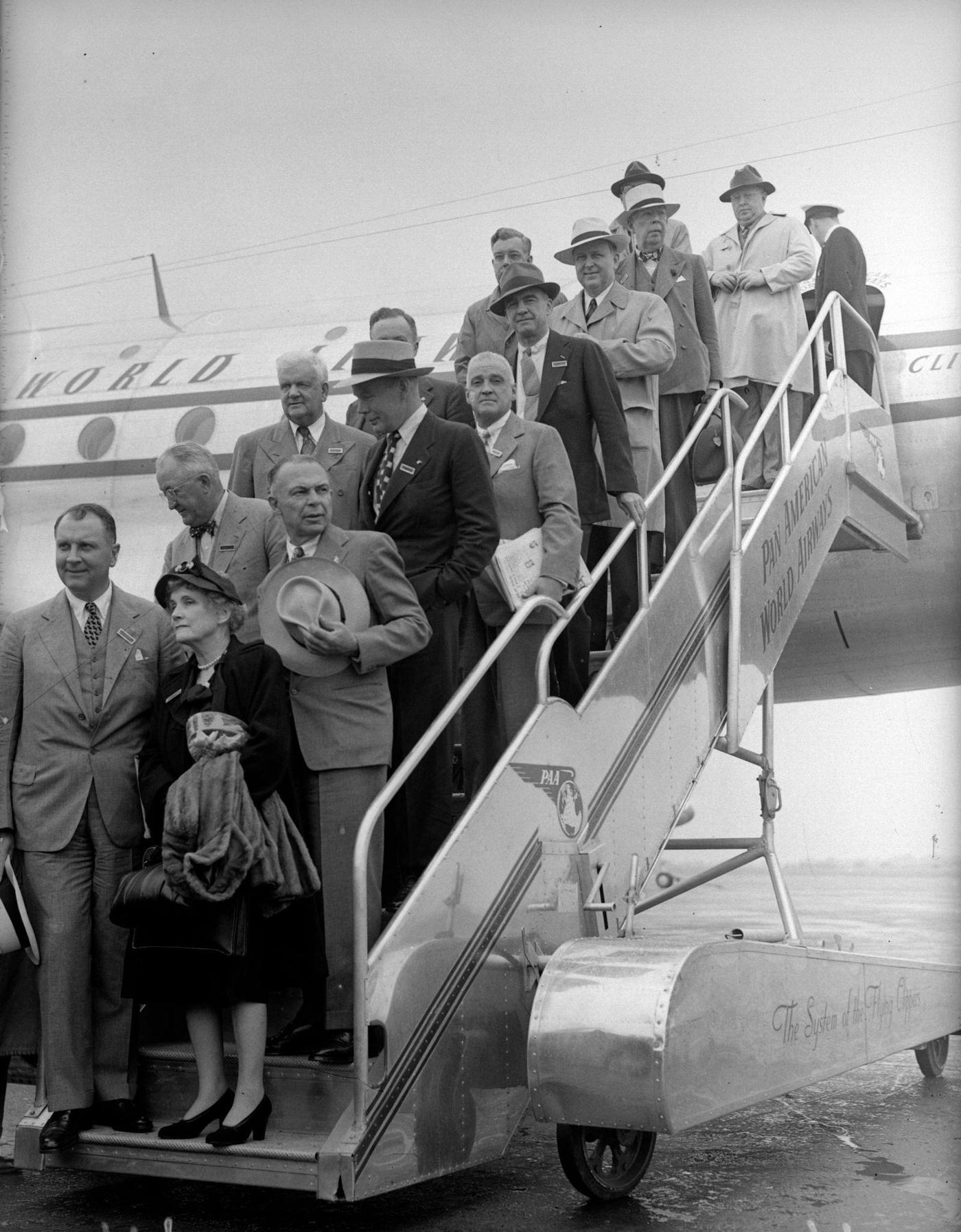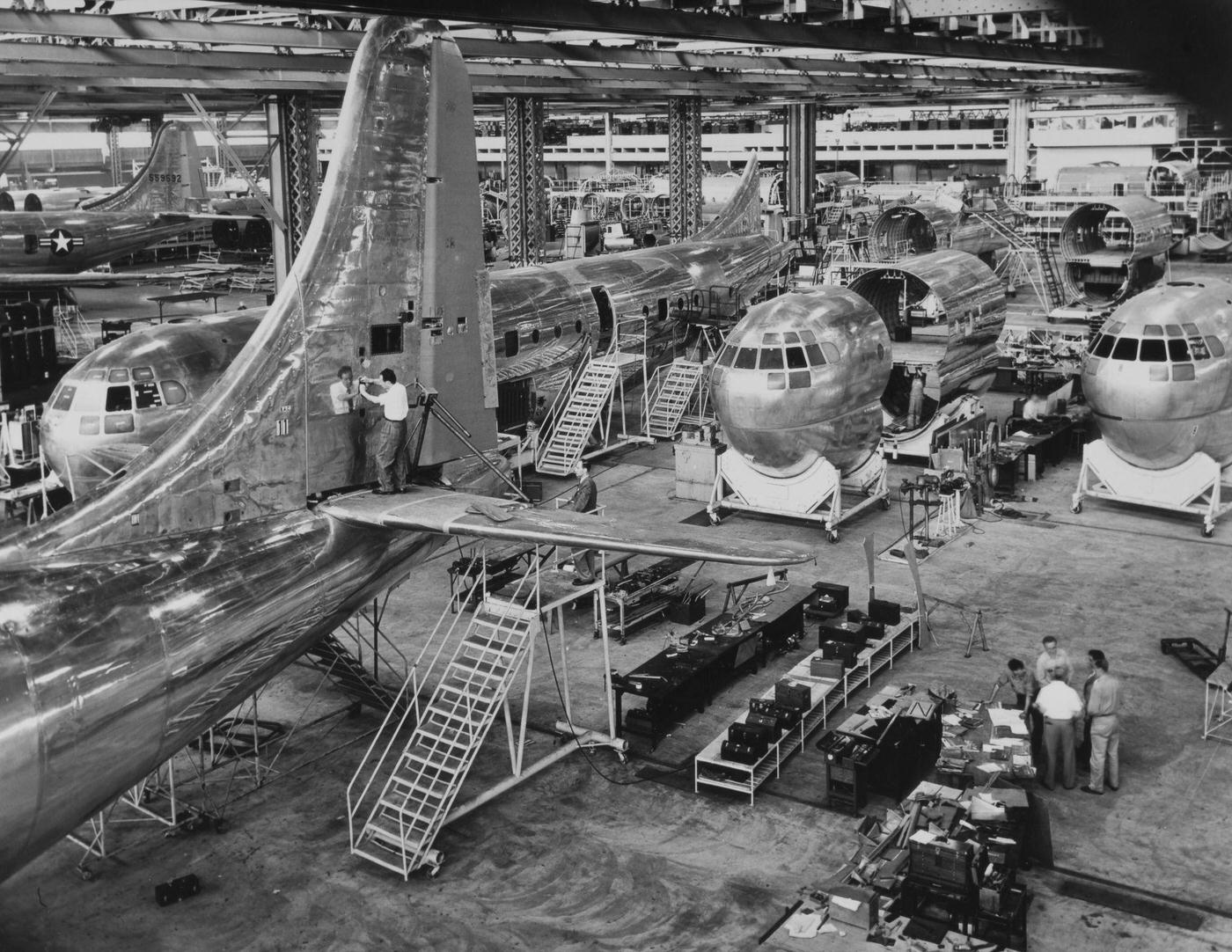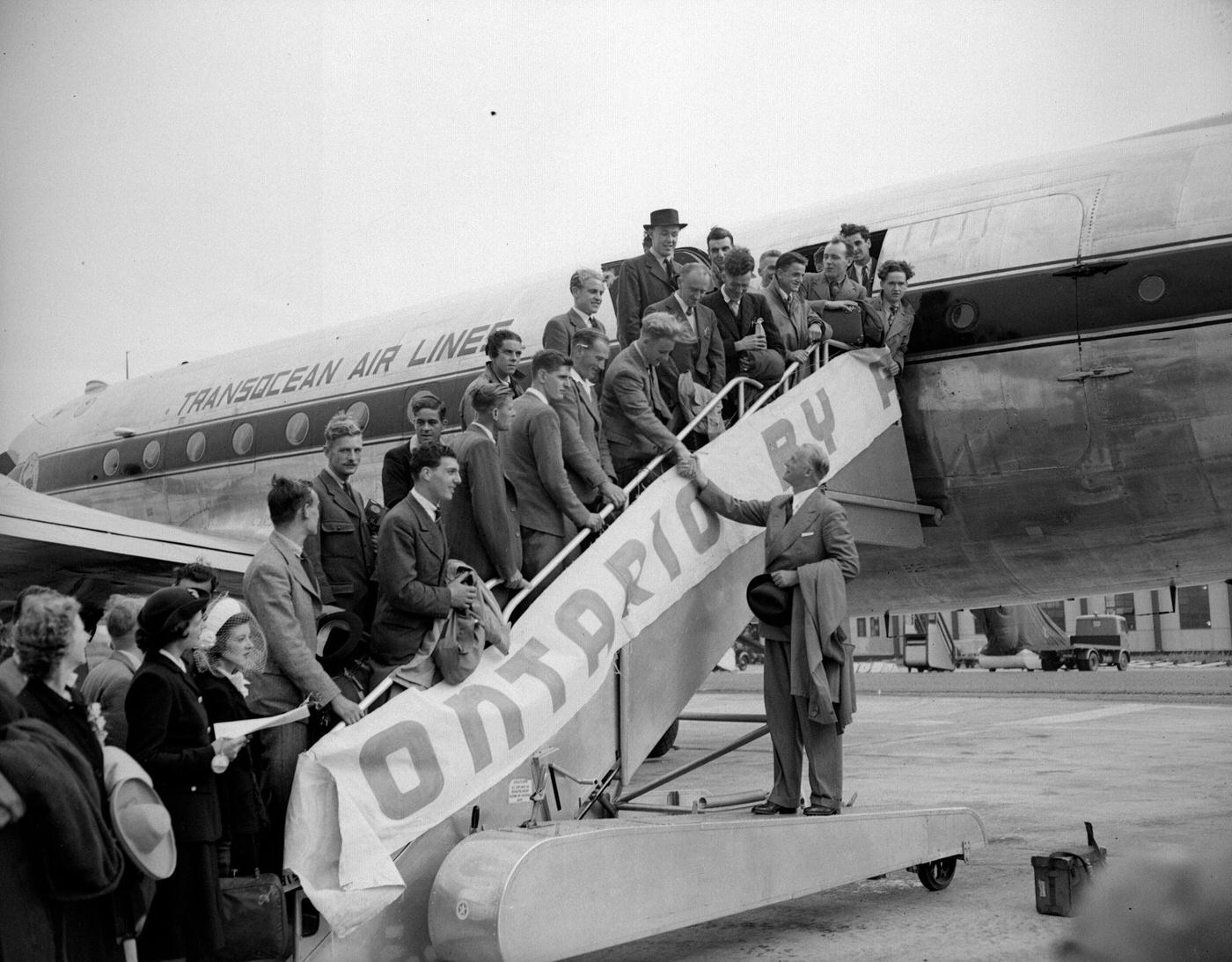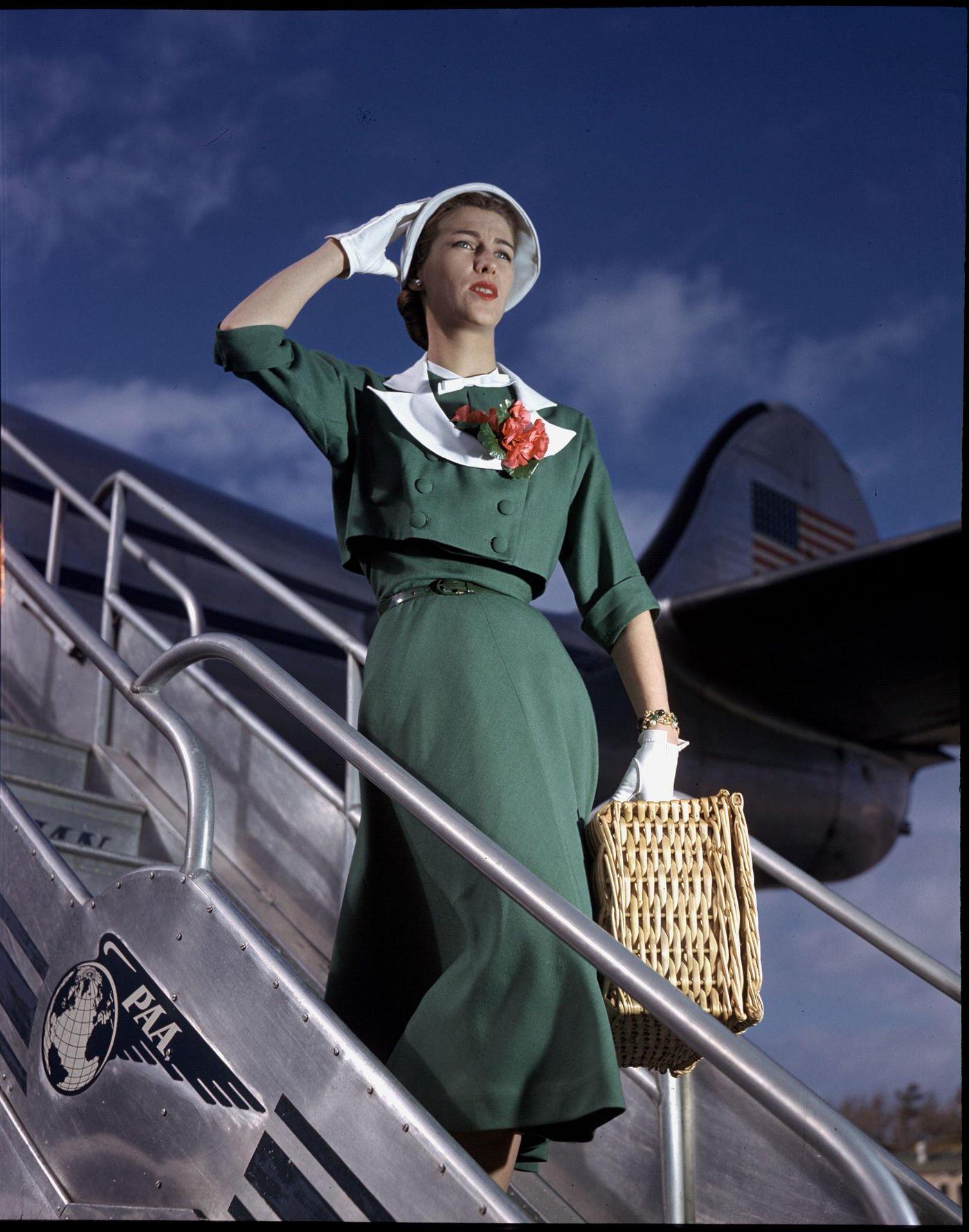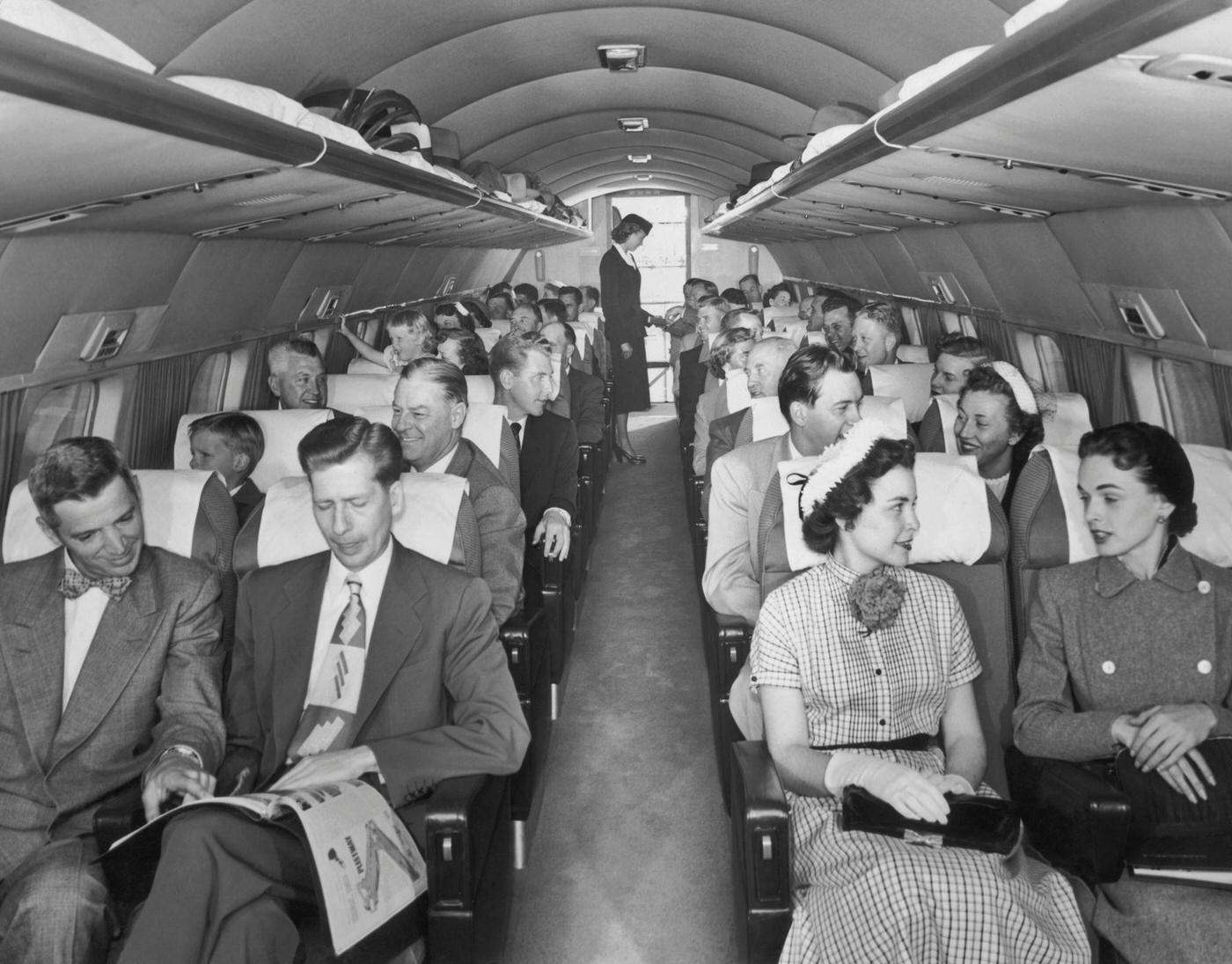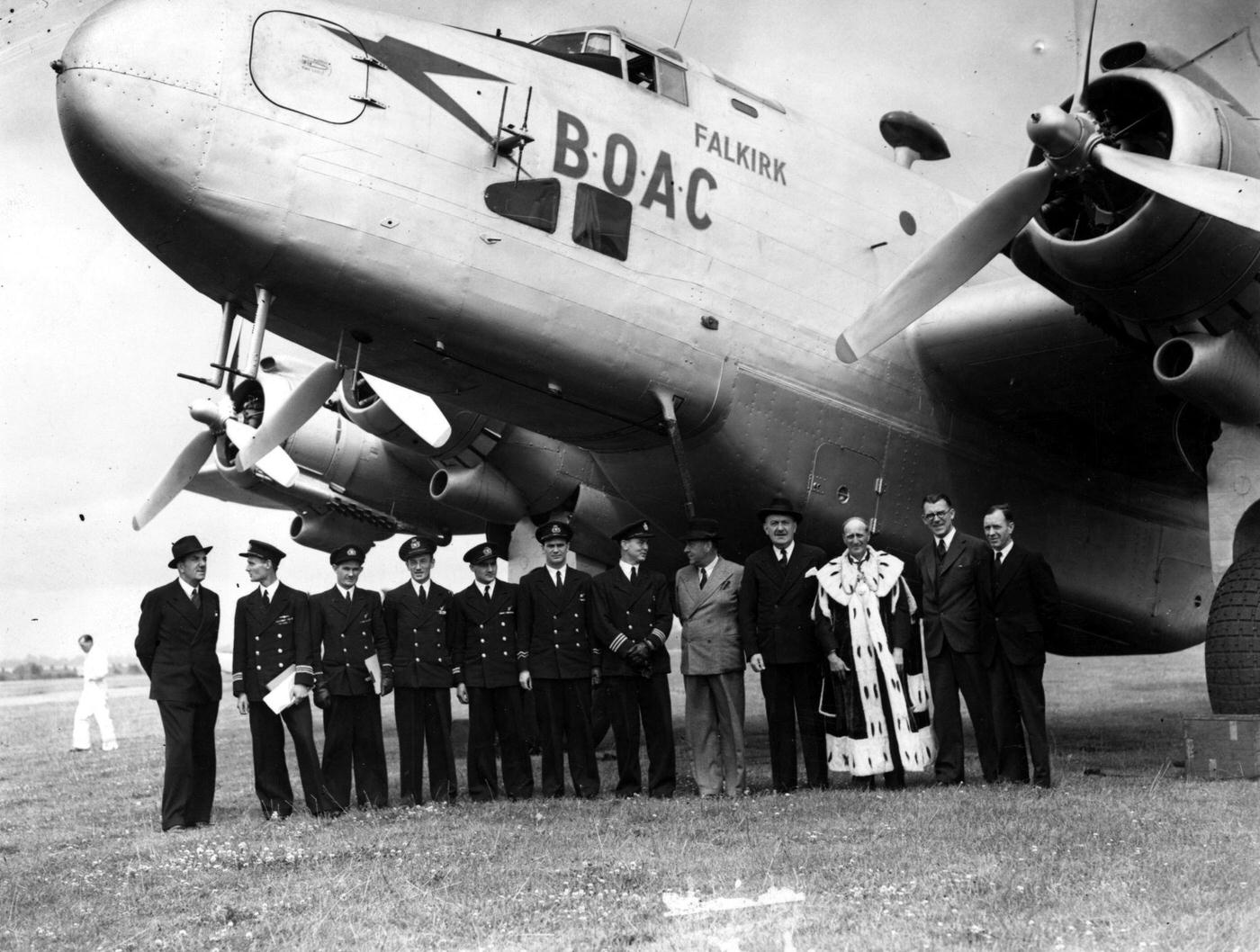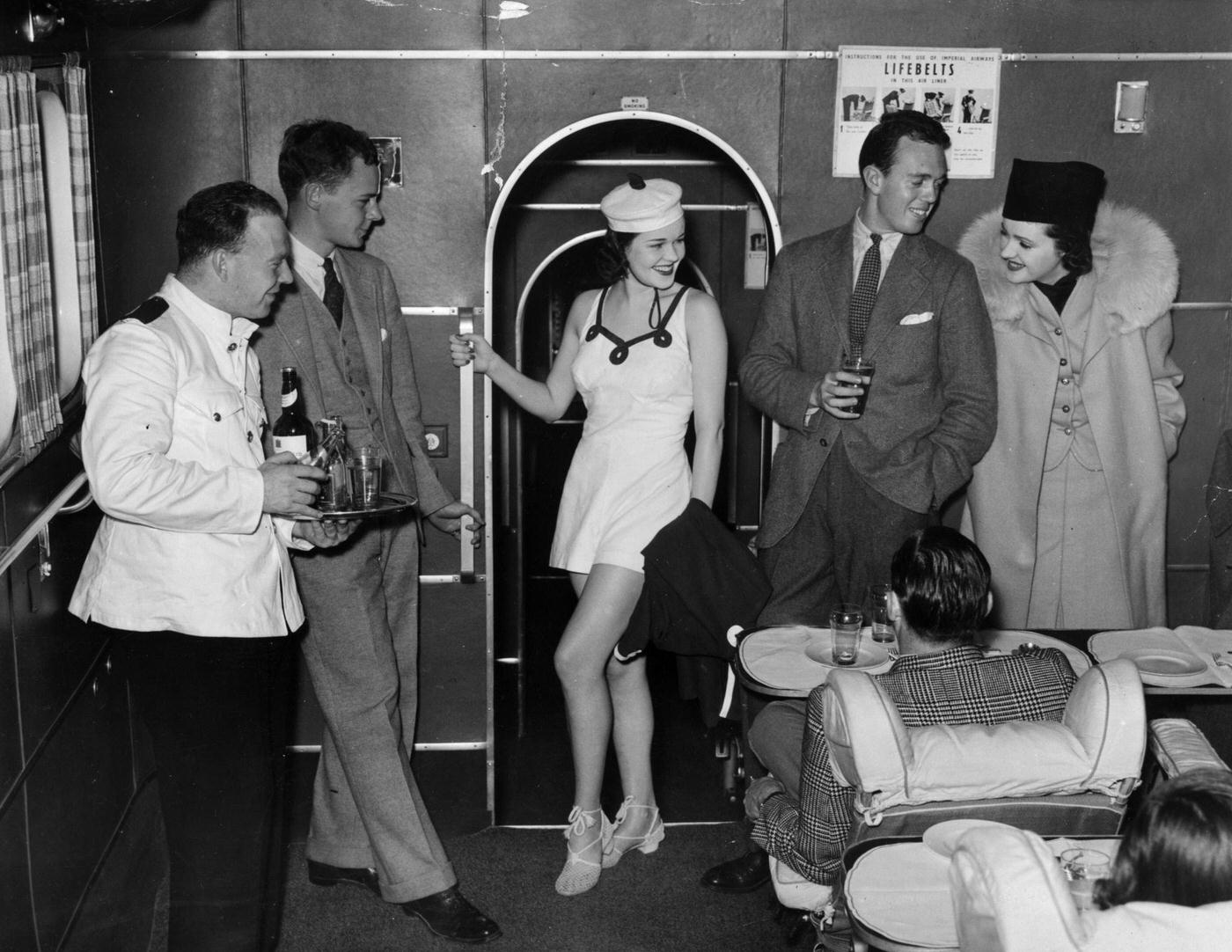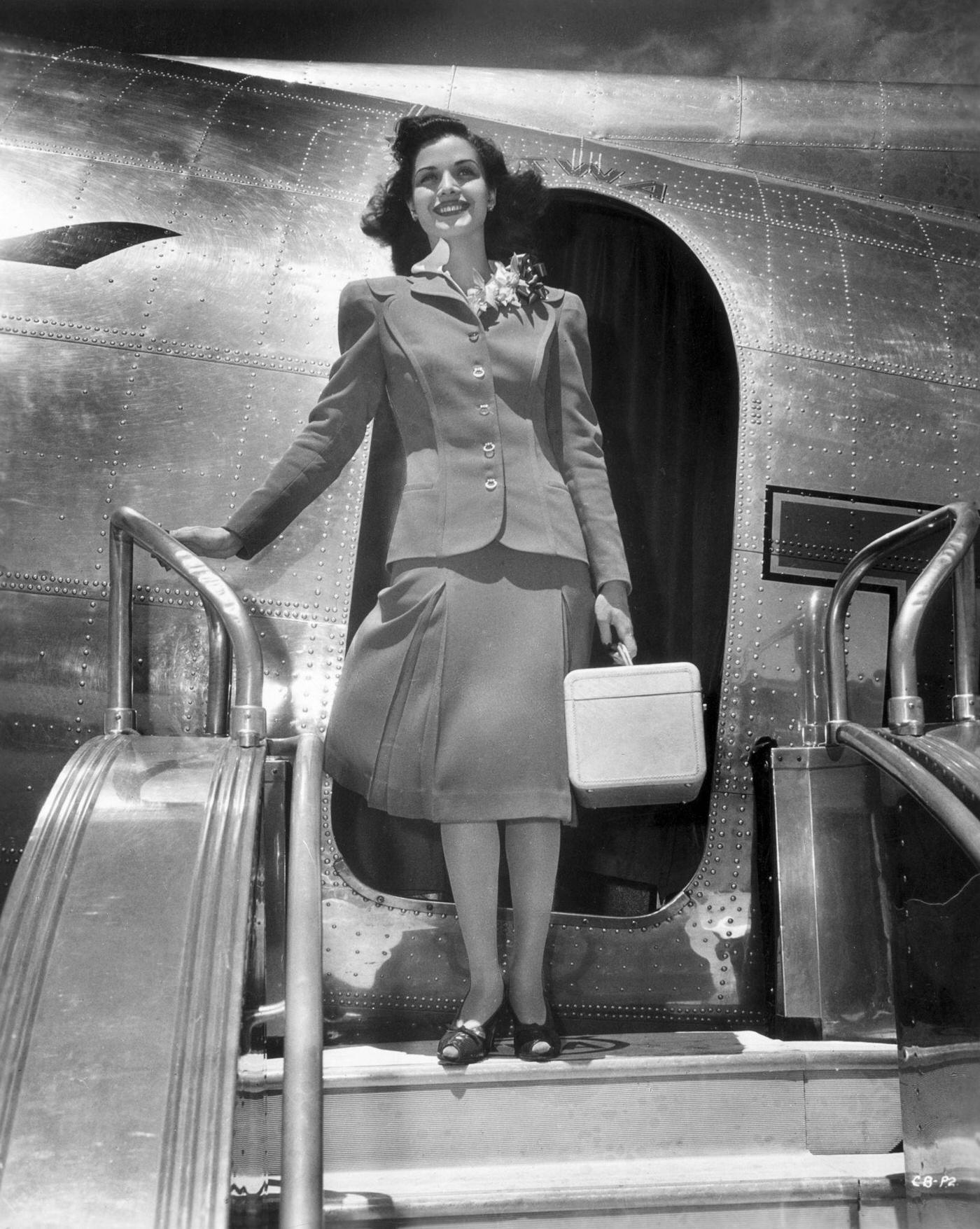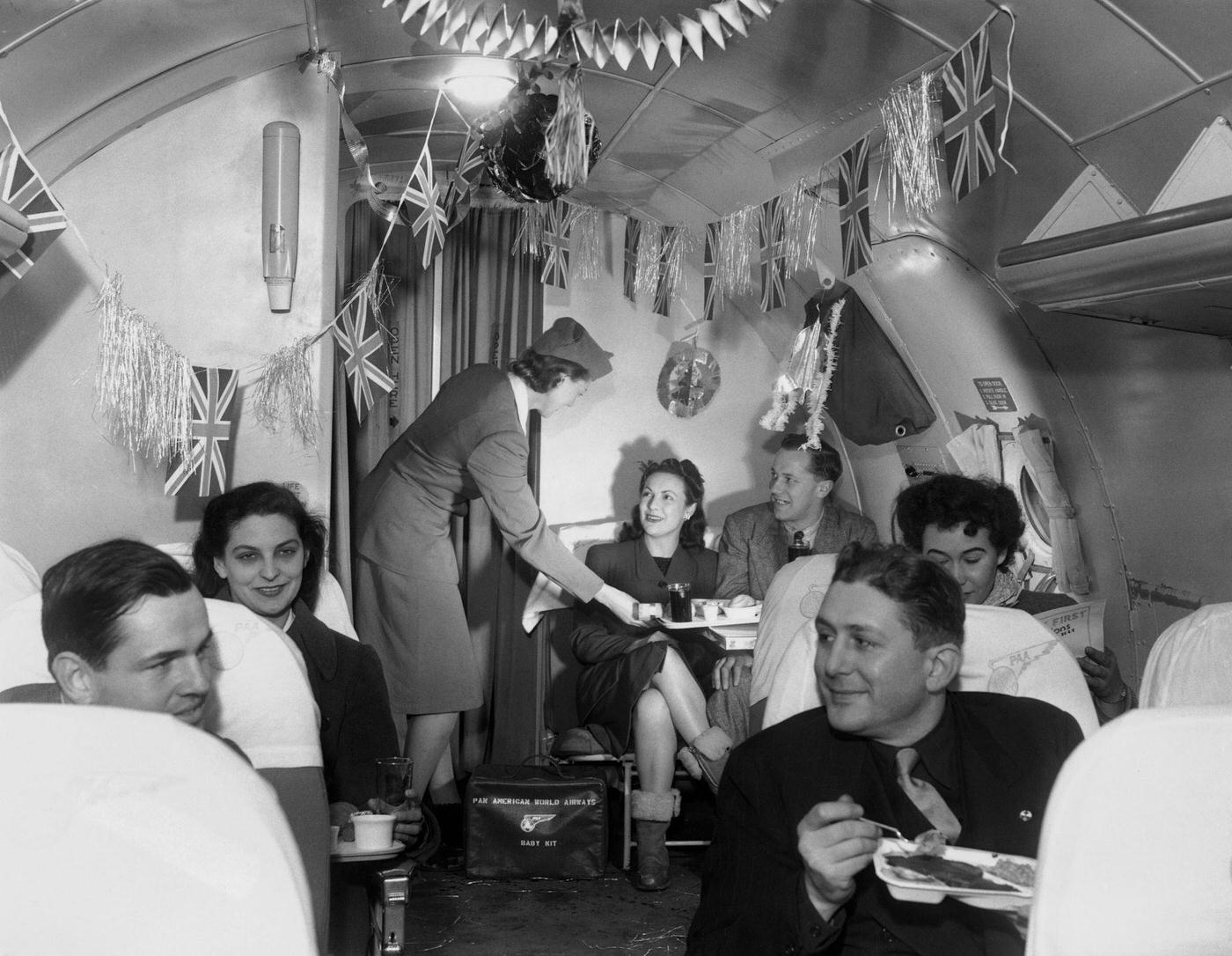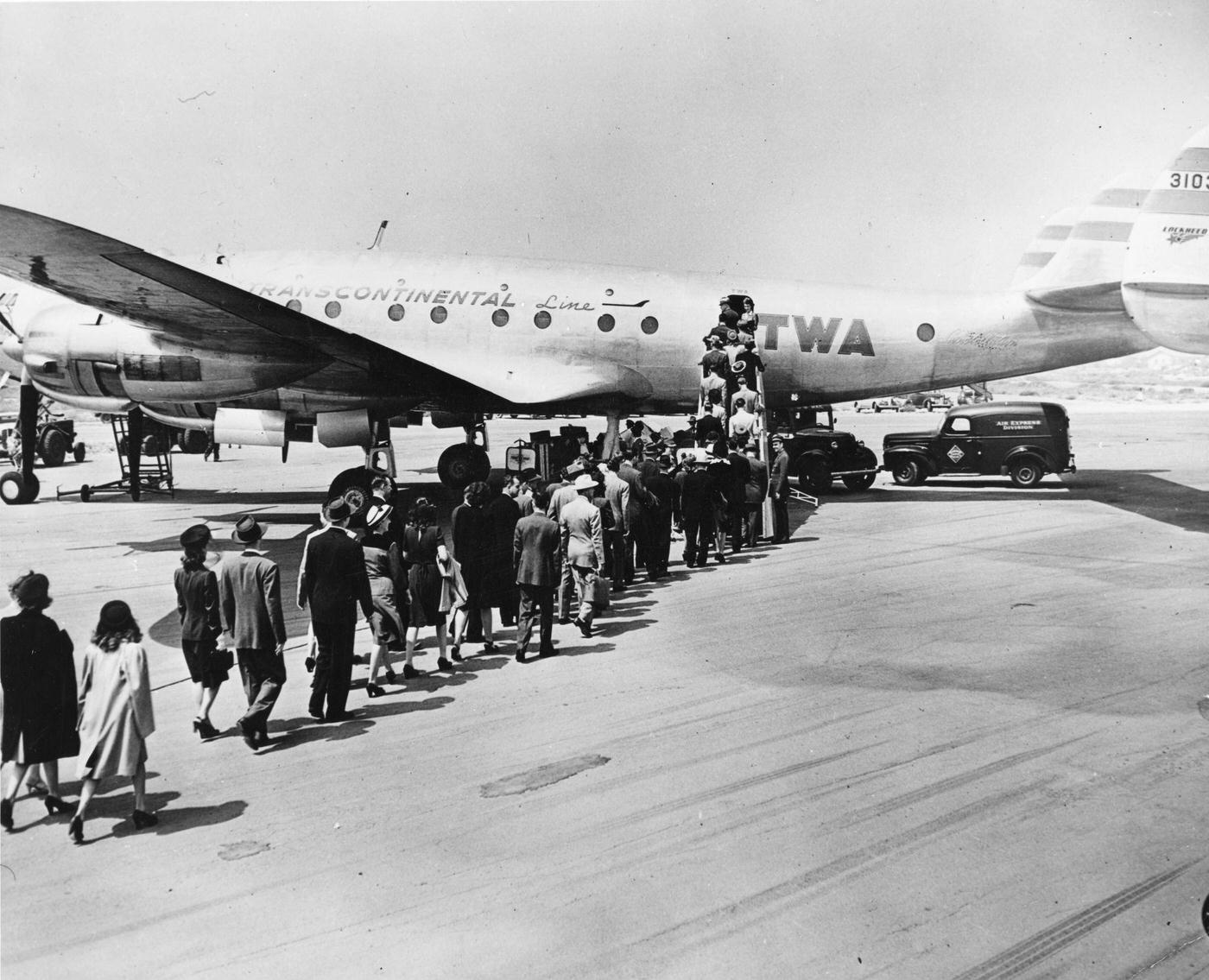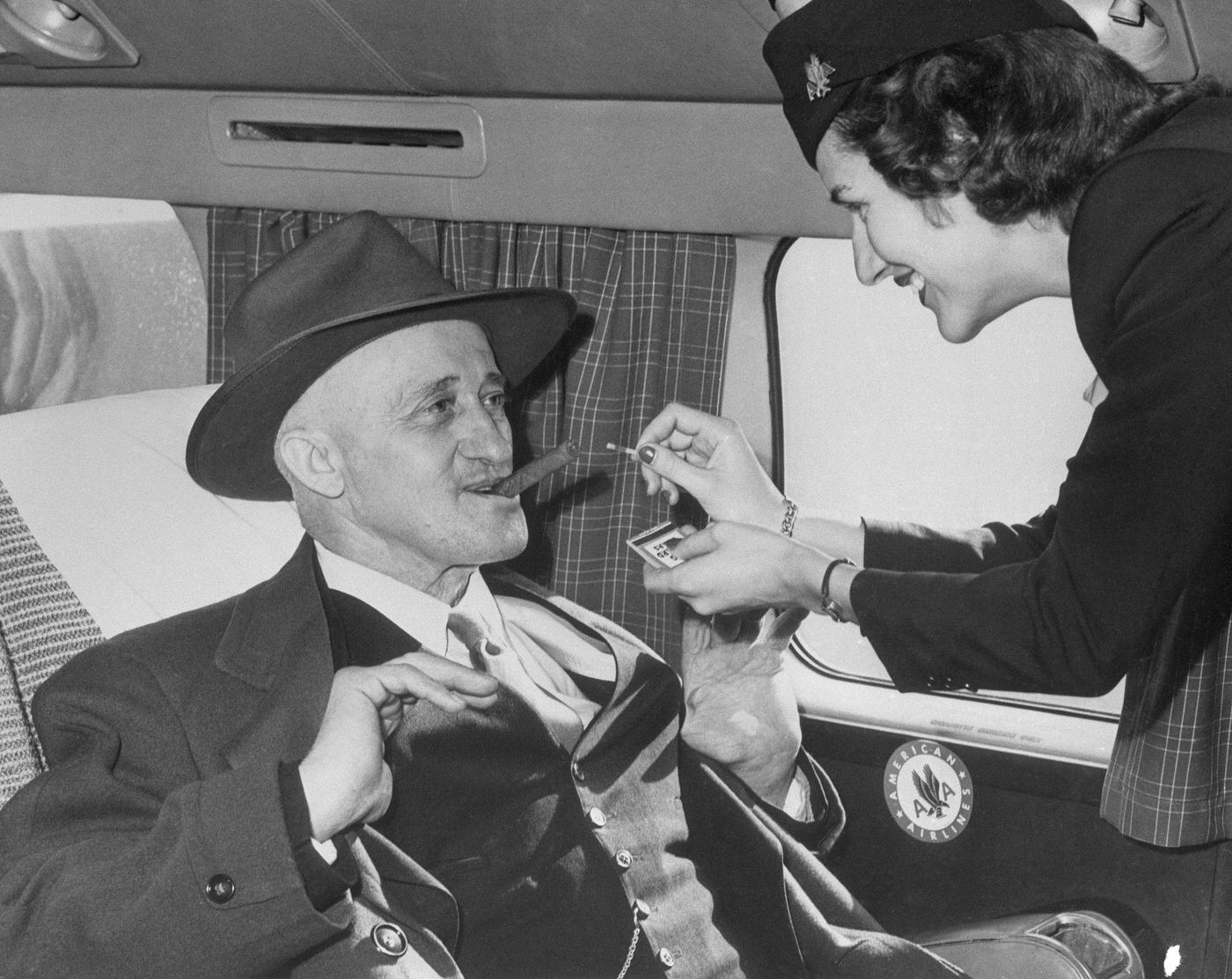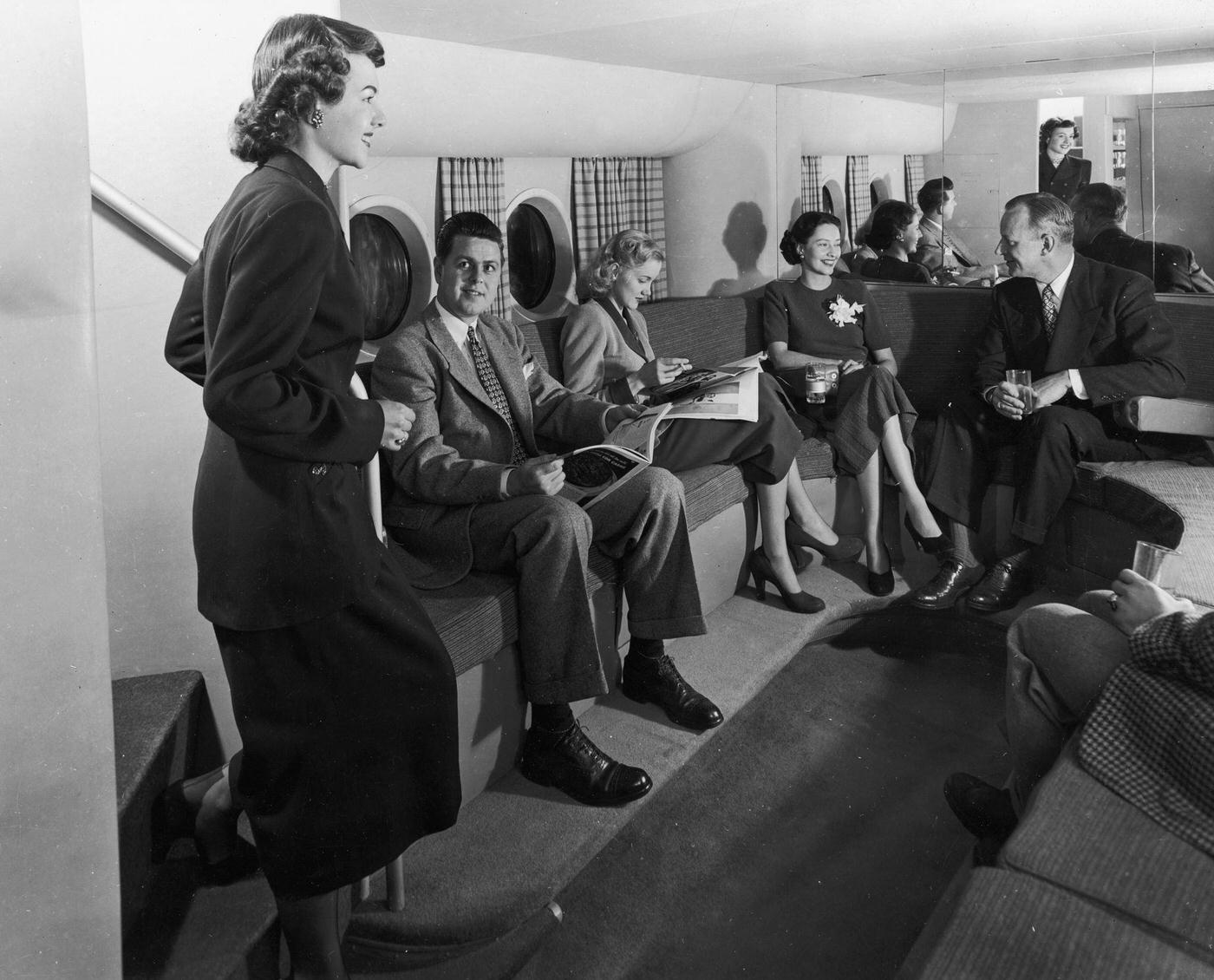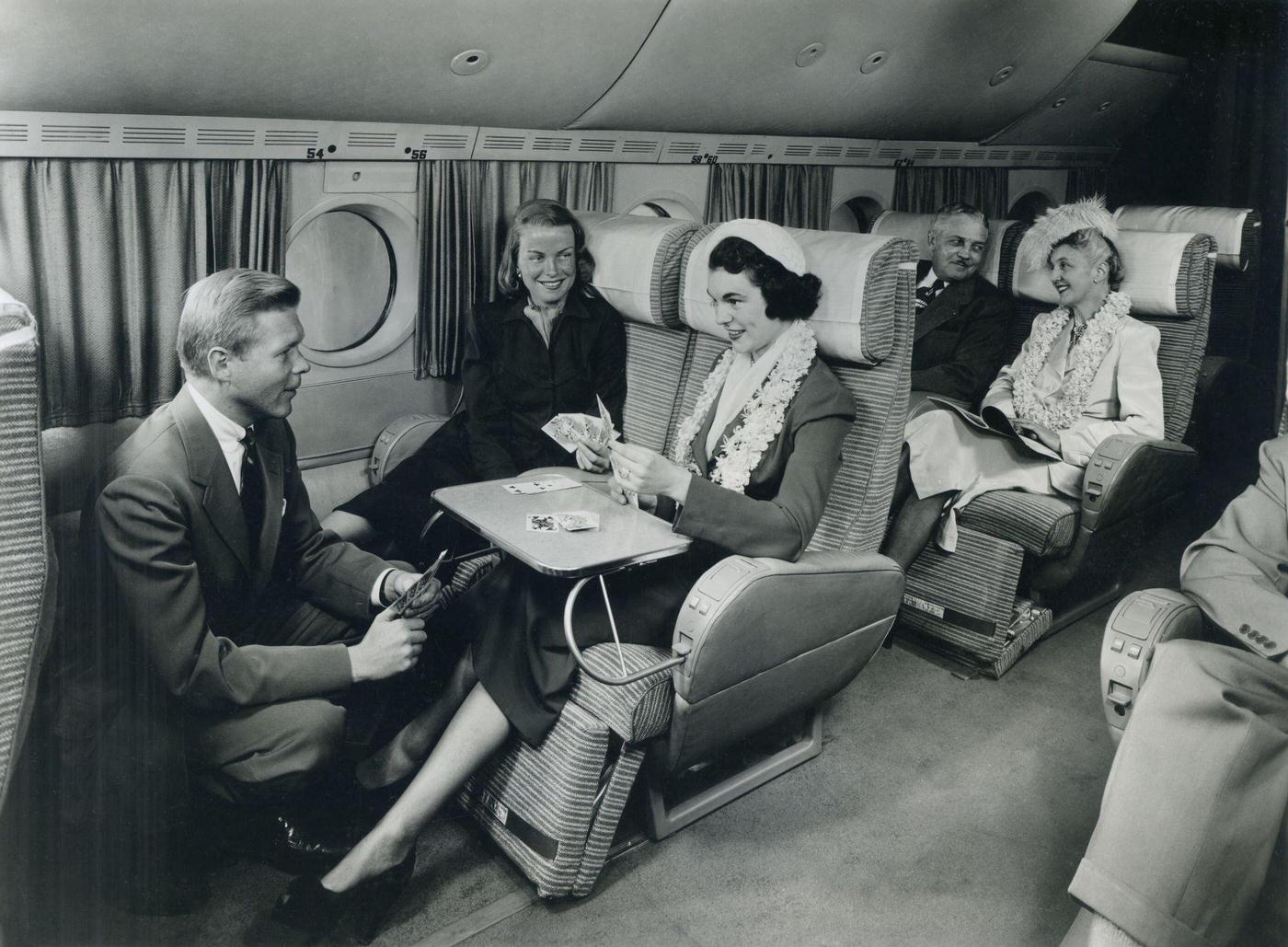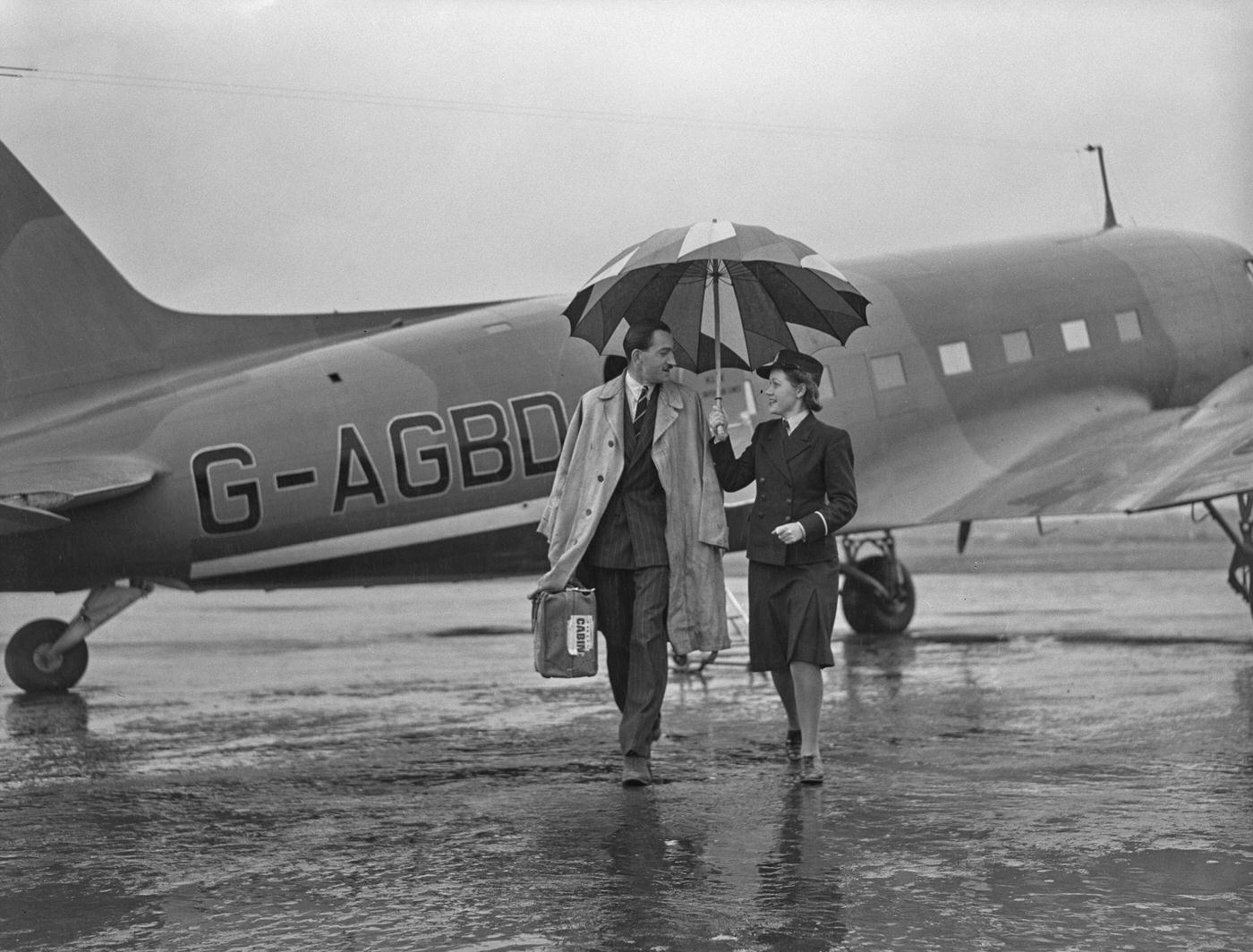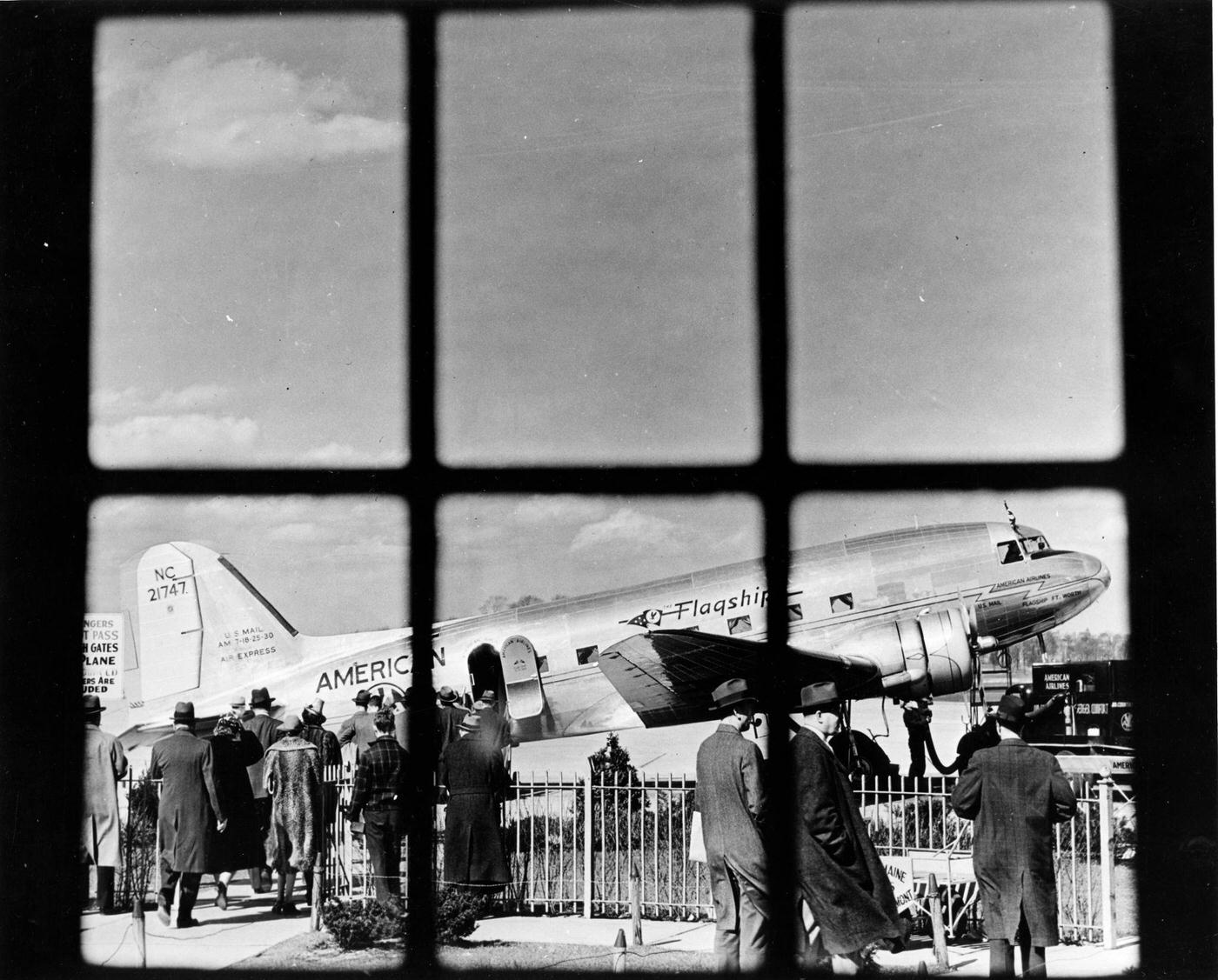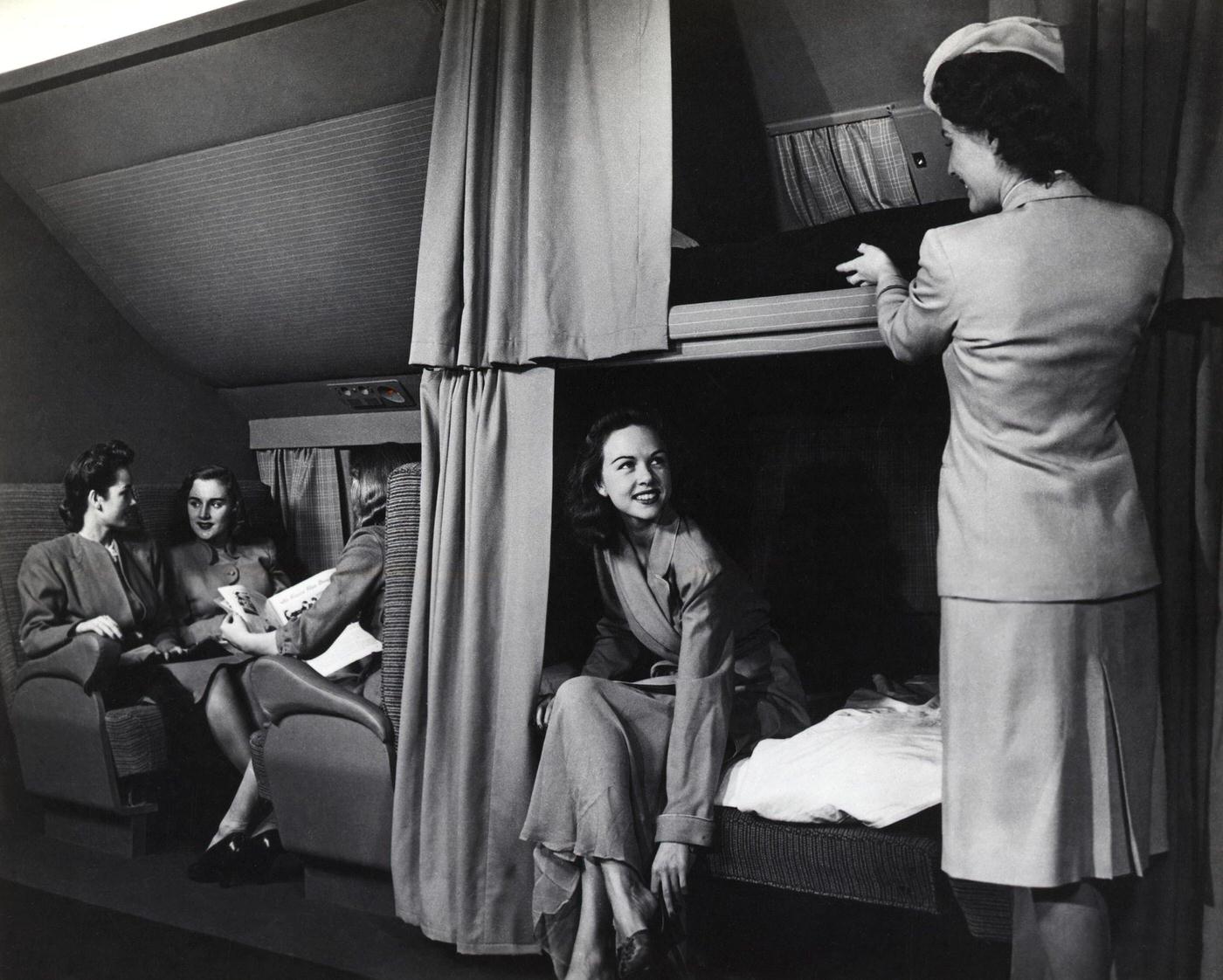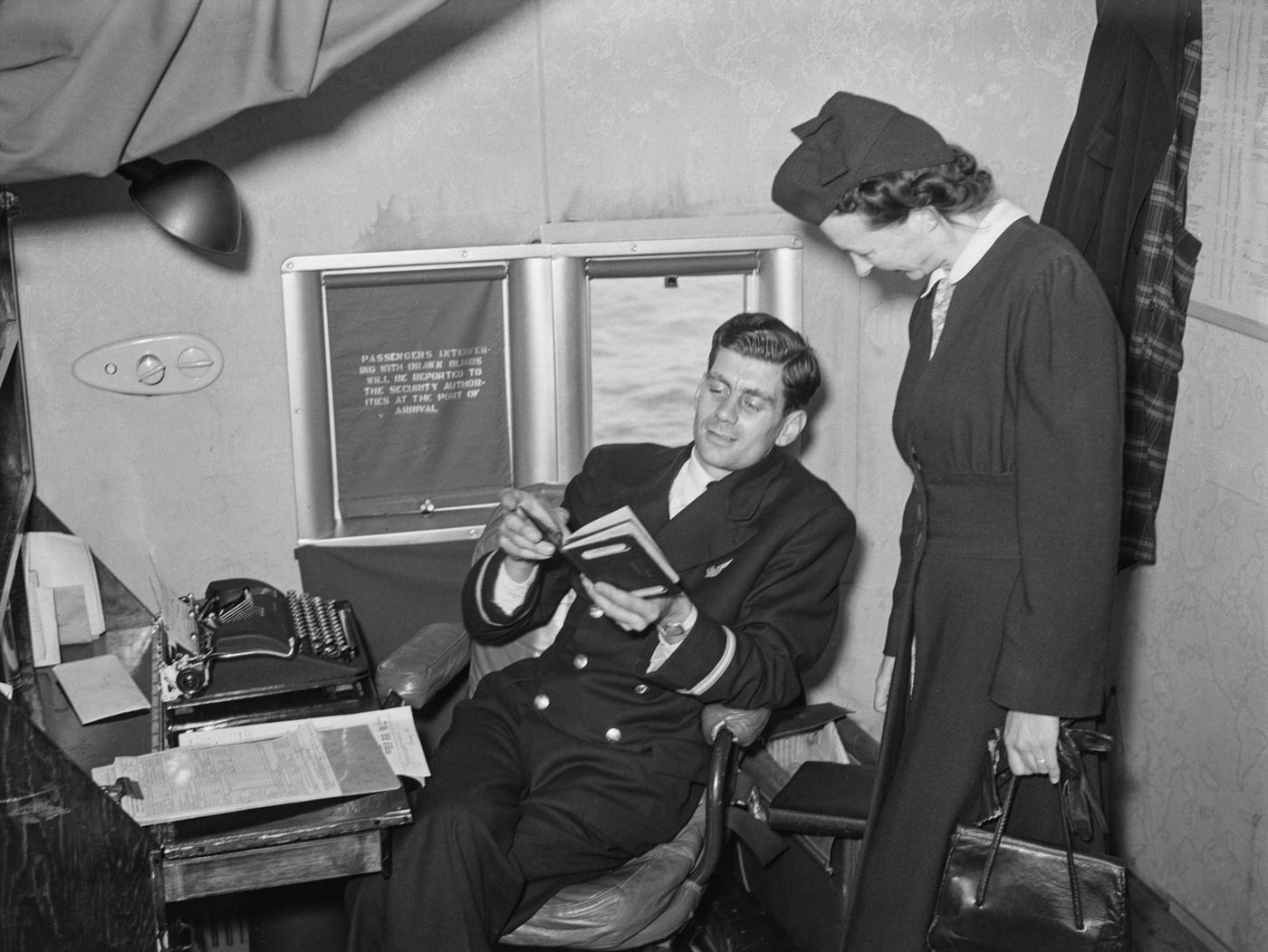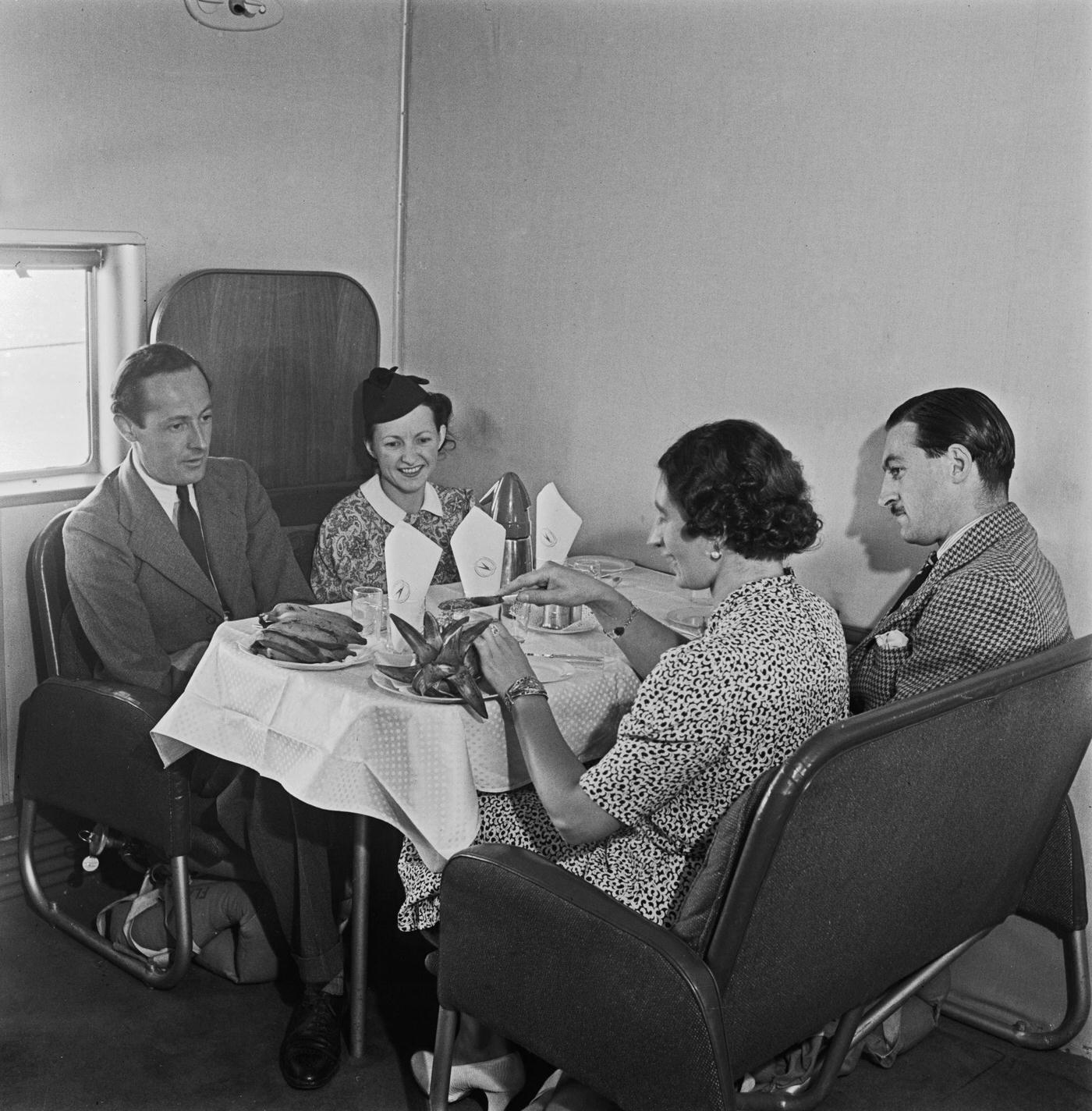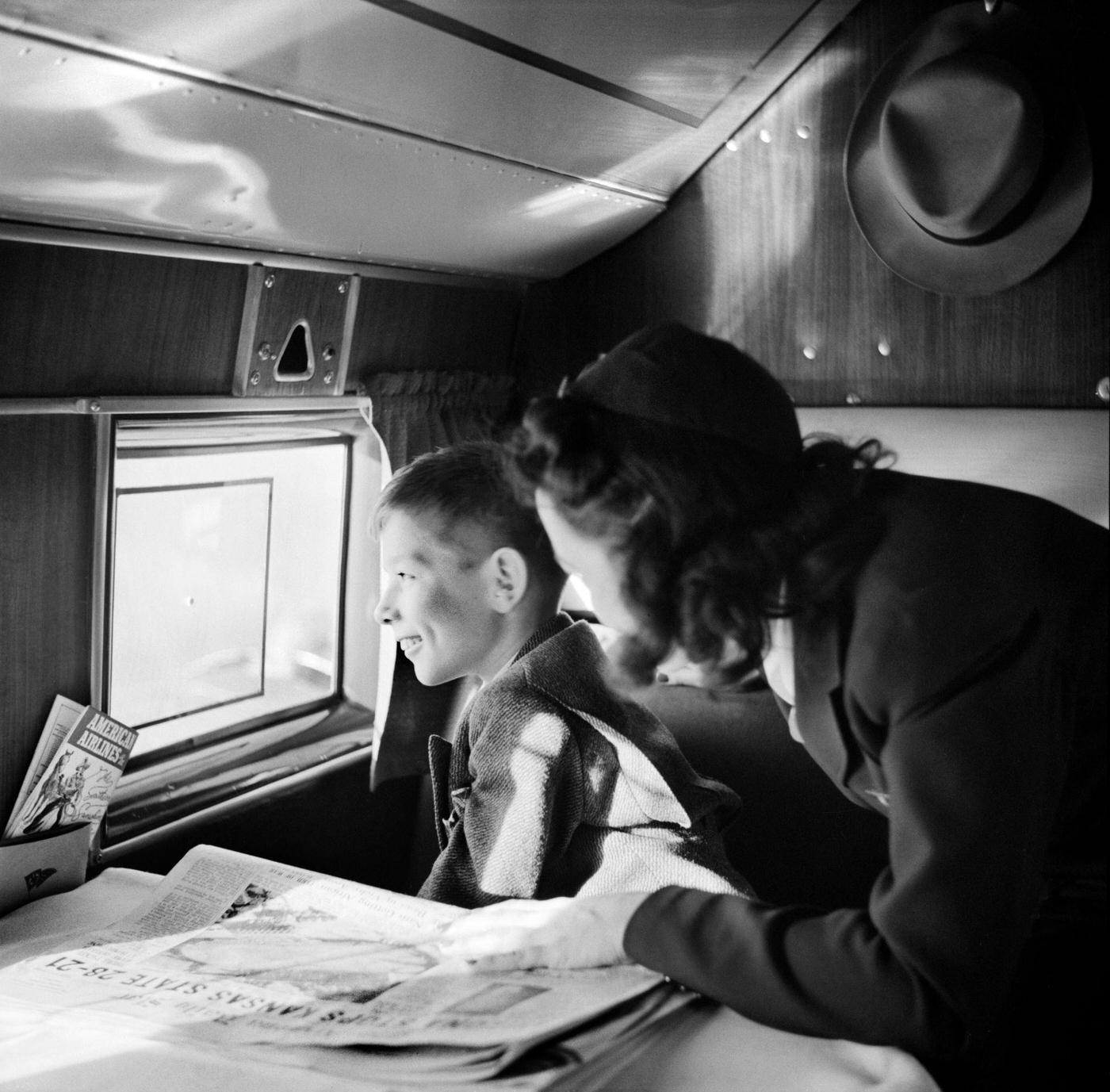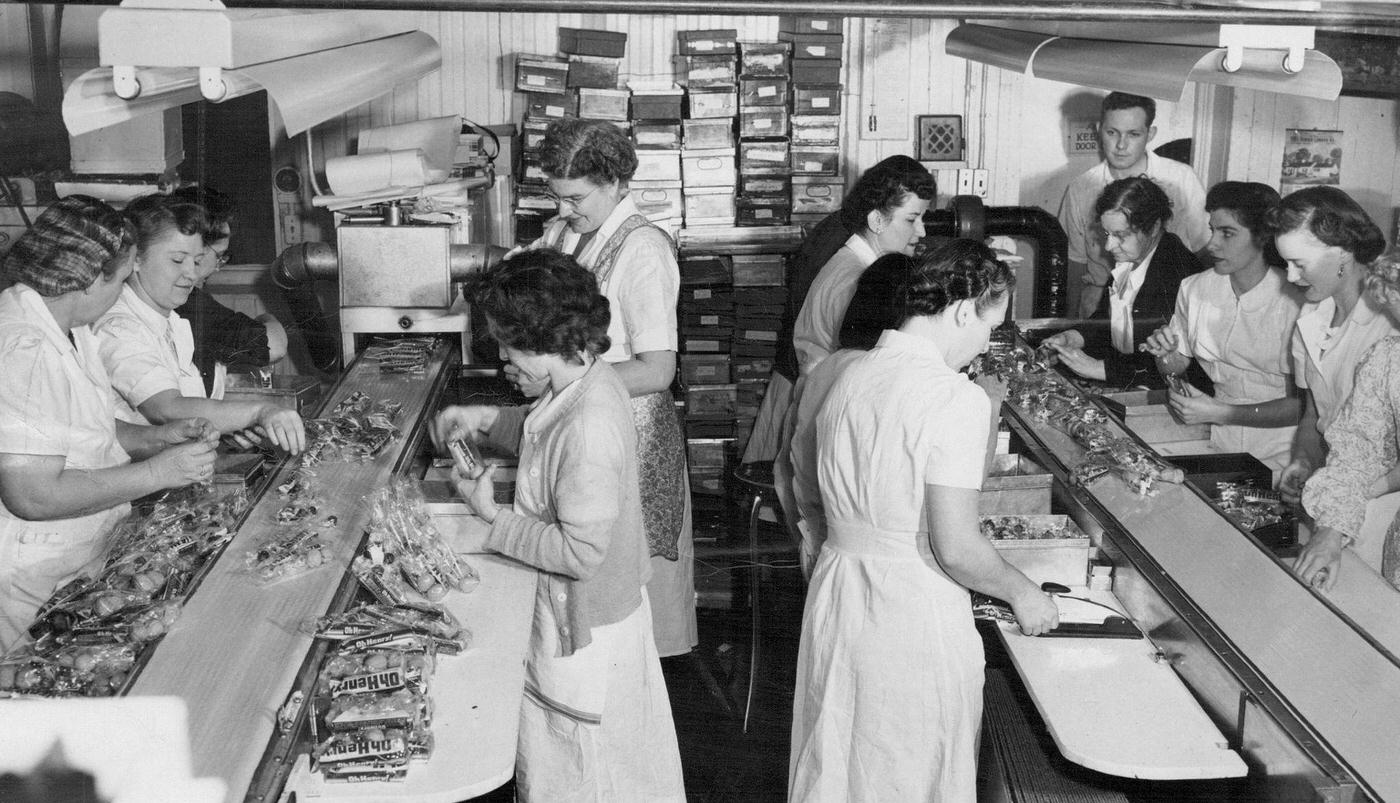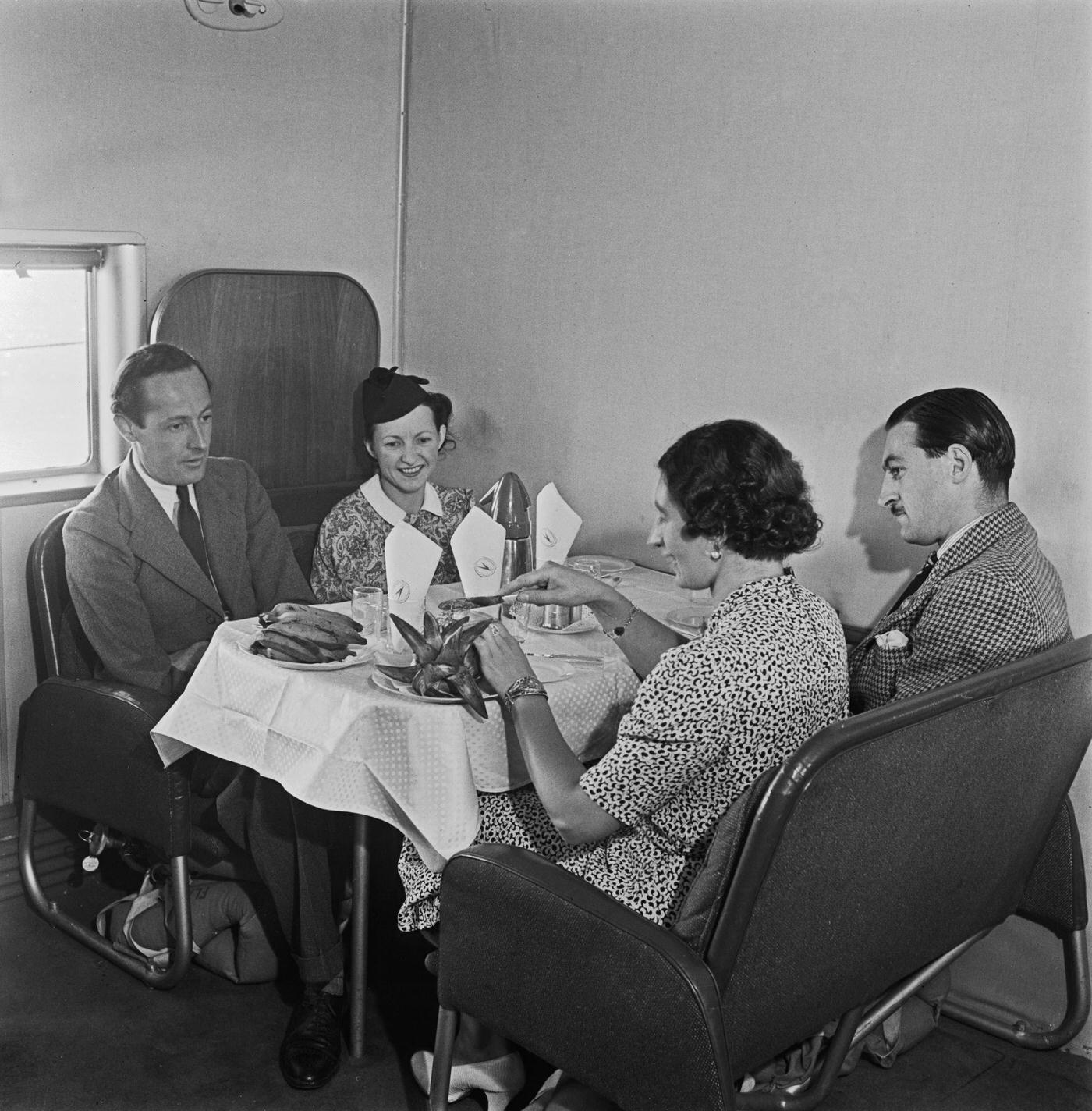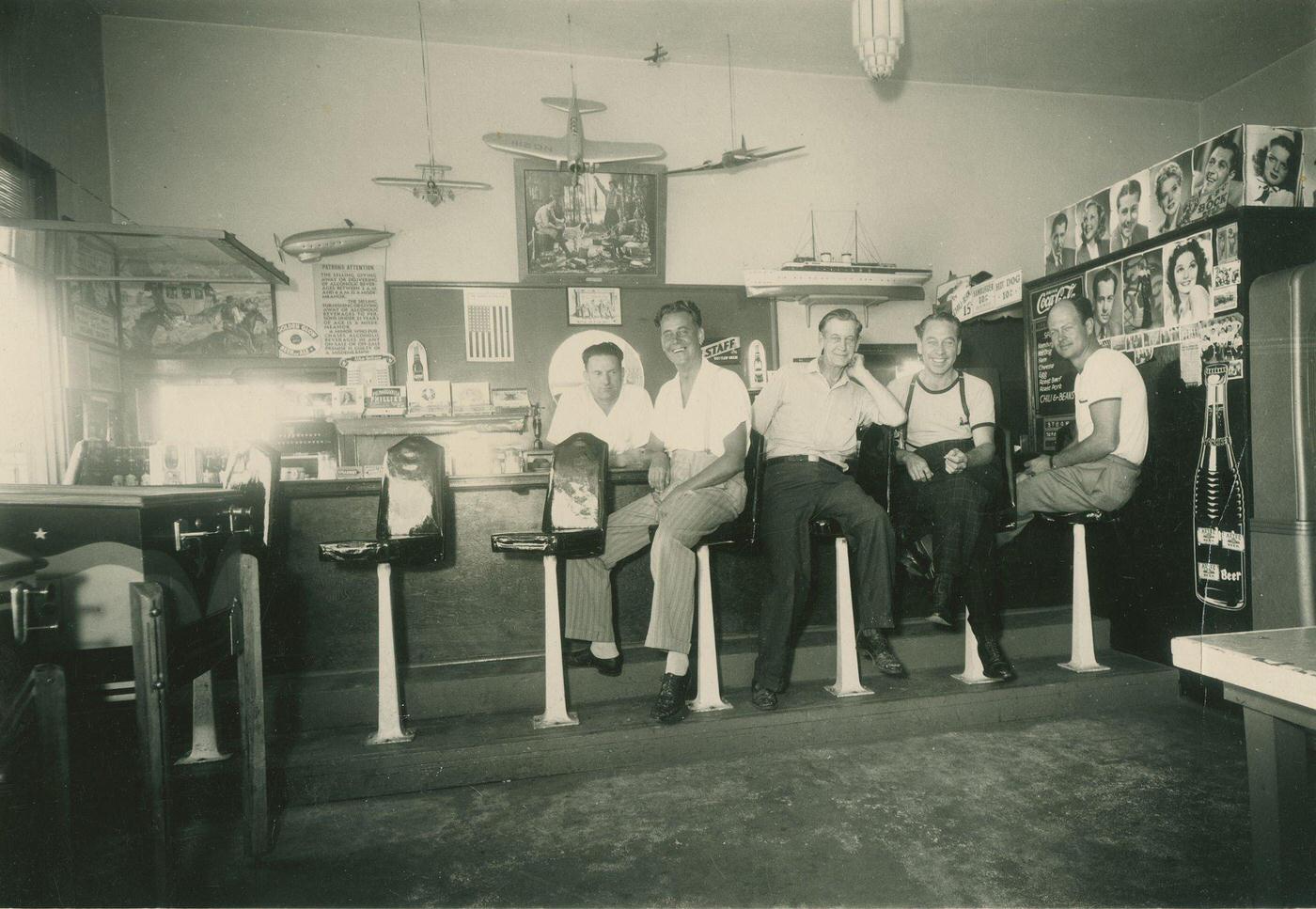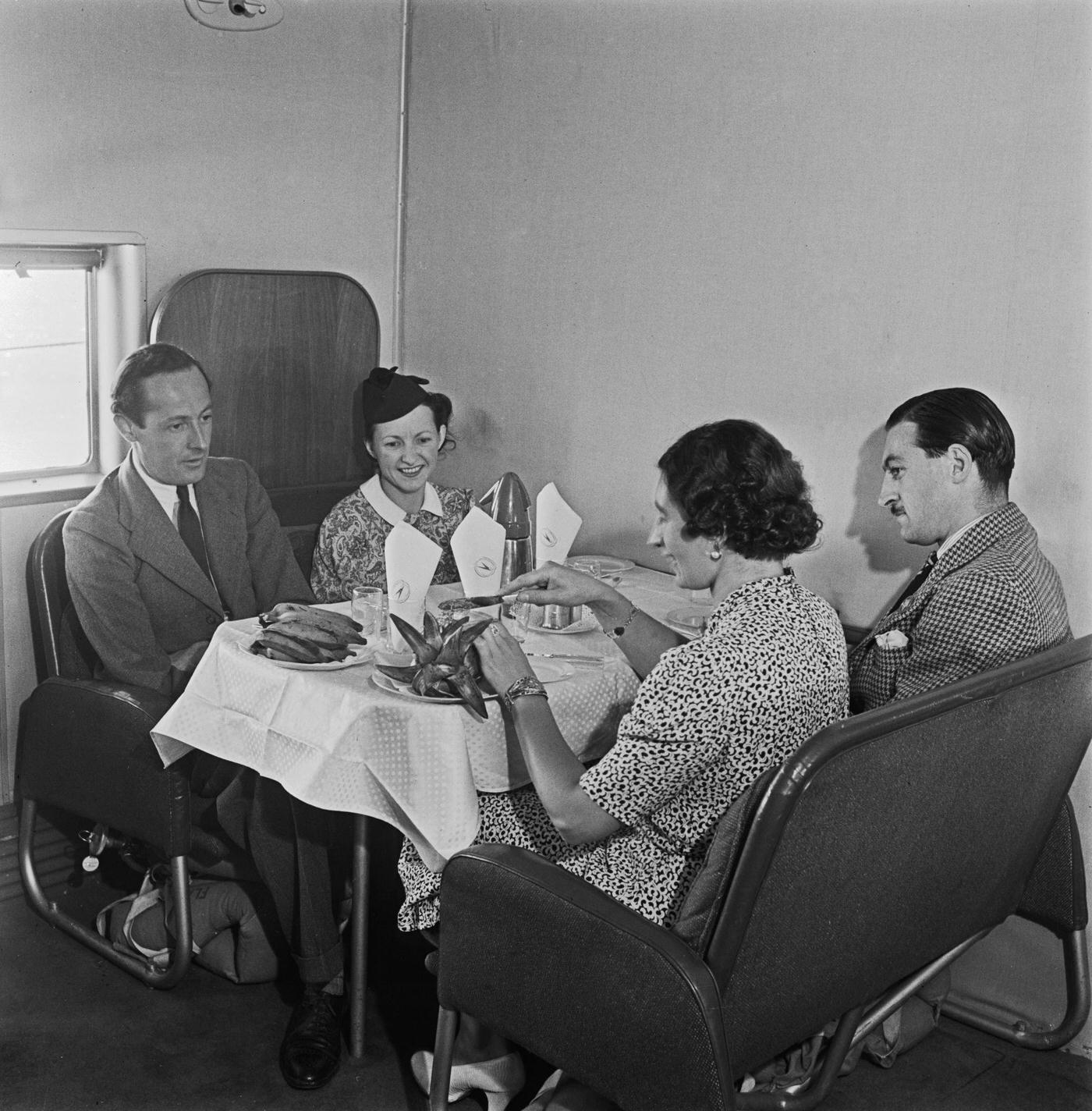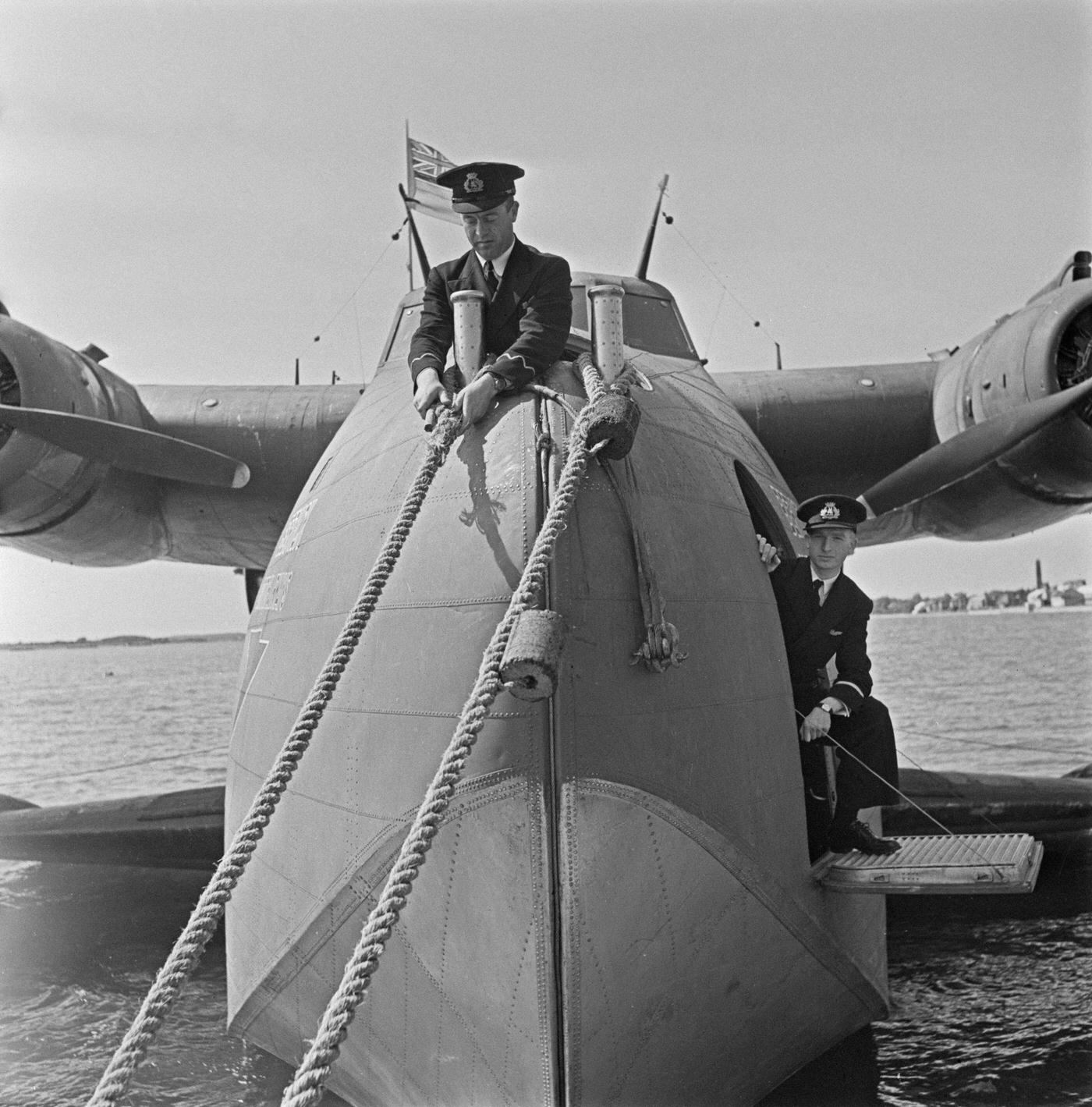World War II significantly impacted air travel in the 1940s. The war led to the development of new aircraft designs and technologies and the expansion of airfields and other infrastructure. However, civilian air travel was limited during the war as most aircraft were used for military purposes. After the war, the industry experienced a rapid expansion as more and more people began to fly for both business and leisure.
During the 1940s, the majority of commercial aircraft were still propeller-driven. The most popular airliner of the time was the Douglas DC-3, which was first introduced in 1936. The DC-3 was known for its reliability and comfort and was used by many airlines worldwide. However, newer designs, such as the Lockheed Constellation and the Douglas DC-4, were also introduced during the 1940s, offering greater range and capacity.
The air travel experiences during this time were still considered luxurious, but they were becoming more accessible to the general public. Airlines offered a limited number of flights and destinations, and the flights were not as frequent as today. Air travel was still considered a luxury and was more expensive than traveling by train or ship.
Passenger services during this time were more advanced than in the 1930s, with in-flight food service and limited in-flight entertainment, such as movies, becoming more common. Flight attendants were also more common, and their role expanded to include safety and customer service.
The flight crews of the 1940s were composed of highly trained and experienced pilots, navigators, and radio operators. Many of them were veterans of World War II and had extensive training and experience. The flight crews were also larger than in the 1930s, with a pilot, co-pilot, navigator, and flight engineer as a standard crew.


